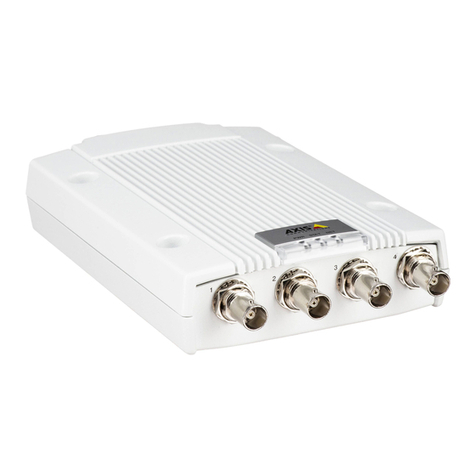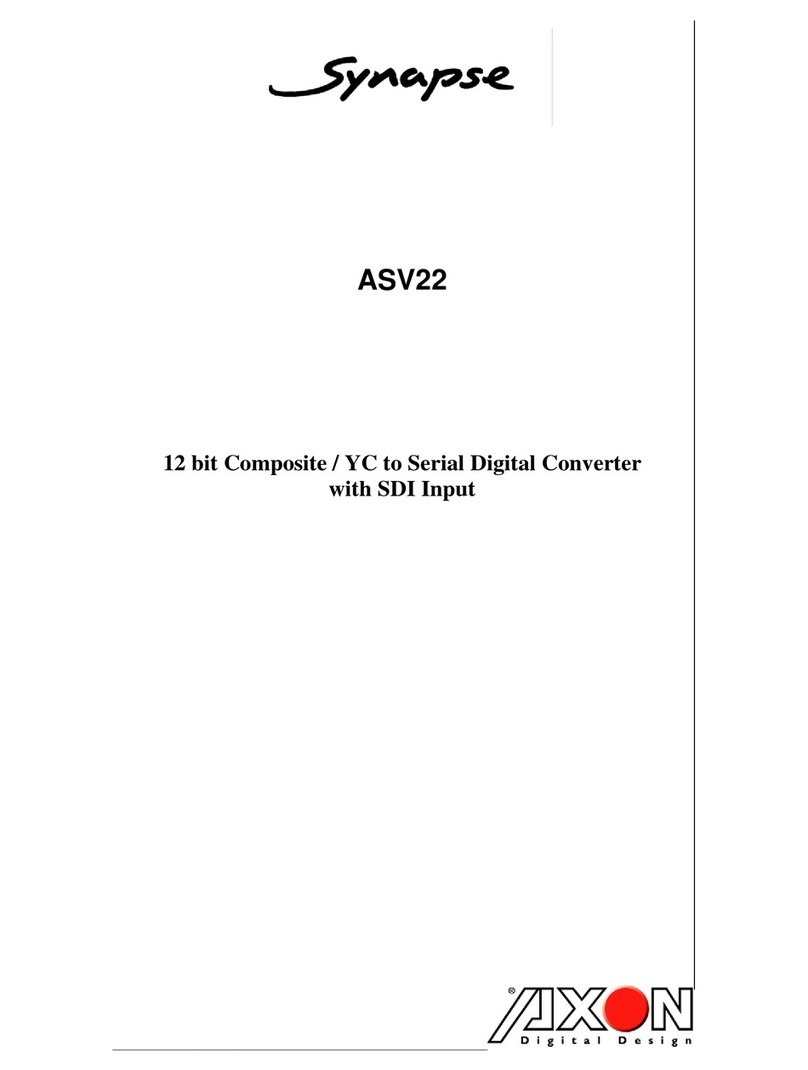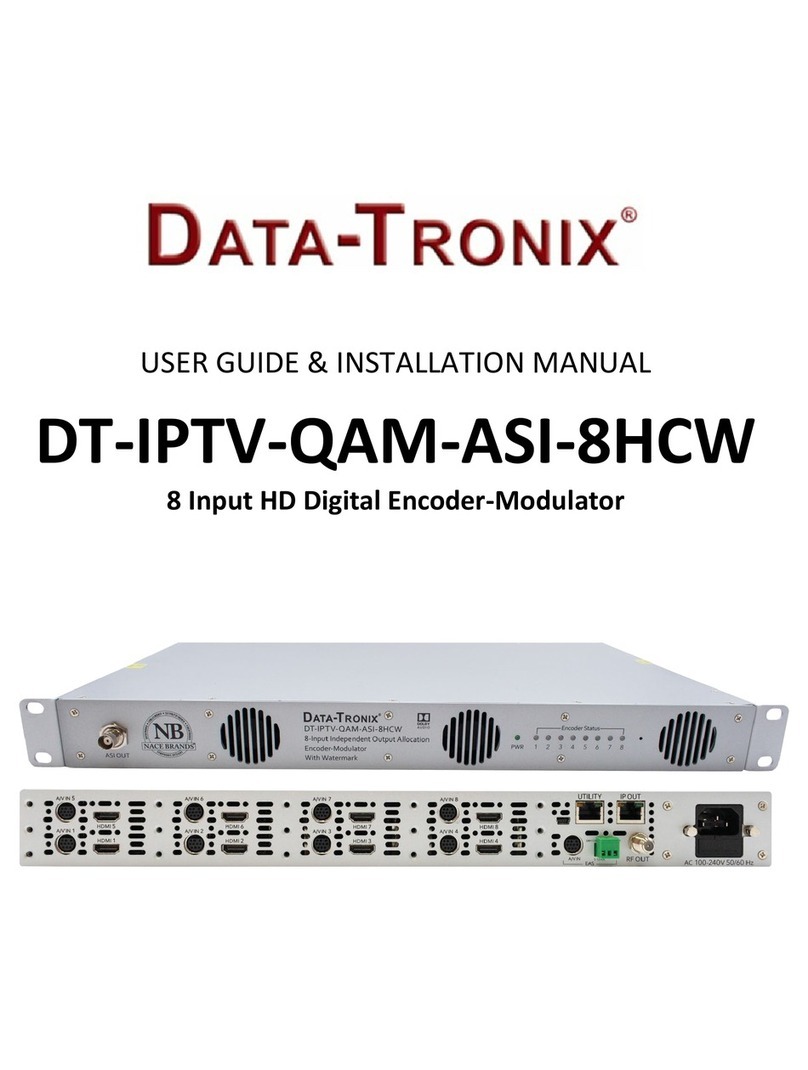Sterling Power Products Pro Split R User manual

technology
4
D
U
R
:
A
L
B
A
L
T
I
E
G
:
I
D
D
E
:
S
C
I
I
G
M
N
A
N
Y
D
ProDigital
RoHS
compliant www.sterling-power.com
STERLING
POWER PRODUCTS
e1
twin alternator unit 4 output
3 output unit 2 output unit
Pro Split R

This unit assumes a common neg between all battery banks and alts. The unit is designed so that the is to prevent any short circuit when running the new cables, a short circuit on a battery can
alternator and starter battery are in contact when the engine is off, this is to ensure that when the easily cause a fire or the battery in question could explode. If in doubt please employ a
engine starts up if you have an alternator which needs a voltage on the alternator to fire it up then professional electrician to install the unit. Or contact Sterling power products on help@sterling-
the starter battery connection will supply that voltage. When the engine is started and the alternator power.com or see our web site www.sterling-power.com
fires up the system maintains the connection with the starter battery until this battery exceeds about Always work from the unit to the battery bank. ie fit the cables onto the unit then the fuse then
13.3 volts ( ), this could be a few mins or a few secs. The system then checks battery connect them to the battery as this way its much safer than connecting cables to the batteries
bank 2 to ensure that it is ok and does not have a short circuit on it, it then engages battery bank 2 then connecting to the unit.
and keeps the starter battery and battery bank 2 on line until they both reach 13.3 volts, ( again this it is recommended to place fuses as close to the batteries as possible, also fit them first as
could take a few mins or a few secs depending on the state and size of the battery bank ) the system they can protect against any accidents during installation. The fuses are there to protect the
then checks battery bank 3 ( in a 3 output unit ) and then engages battery bank three. this process cables in the event of the pos cable coming in contact with the chassis of a vehicle or a steel hull
could take as little as 3 seconds under normal conditions or in extreme cases with large flat batteries on a narrow boat or a bonding system on a boat or vehicle. In some case this is a statuary
up to an hour or so. The unit continues to monitor the voltages on the 3 outputs and the alternator requirement.
input, in theory these should all be the same, any attempt to pull these voltages below 13 volts Fuses are not supplied with the unit but can be purchased separate from your local chandlery or
means that one battery bank is attempting to discharge in excess of the ability of the alternator to from Sterling Power Products. For high current fuses Sterling always recommends fuses to be
supply the current and is going of start taking power from one of its neighbouring battery banks, in installed at about 50% larger than the maximum possible current, round this figure up to the
the event of this happening the system will channel the alternator power into the battery bank nearest 50 amps.
which requires this load, and disconnect and protect the other battery banks.
I would advise you read what all the alarm functions do , this may make understanding the
system easier.
To install the unit, pick a cool part of the engine room ( ie as low as possible ) the unit is to . It
also does not matter what way up the unit goes. however the unit has been designed so the
Please note that the unit will not switch off as soon as you switch off the engine, cables do not run across the bolts from other battery banks, if the unit is connected as per the
when the engine is switched off the battery banks will be isolated but the unit l.e.d.s will remain on obvious writing on the unit and the cables should be brought up from below. You can connect
for about 10 secs or so. the unit at any angle you wish to assist in the wiring process. Using the 4 fixing holes firmly
A special connection is secure to a bulkhead. when all cables are connected tie and secure the cables in such a way as
available on the unit for advanced regs and remote sensors on alternators with battery sensed regs ( there wright is supported on the bulkhead and they do not vibrate or touch any of the other
volvo ), we strongly recommend you use this point, this is to ensure the maximum performance of studs.
the alternator and compensates for any voltage drop between the alt and this control box . Ensure your alternator or alternators are working with in the total limits of the unit , ie is the
unit is 180 amps the total maximum current is 180 amps, it does not matter if this is a 50 amp
1 ) under normal running alt plus and 70 amp alt as the total possible current does not exceed the continuous rating . For
conditions with the alternator working then all these l.e.d.s should be on, these l.e.d.s show that a twin alt input, each output can deal with the total from both alts output together . ie a twin
circuit is active. In the event of one l.e.d. being off then look below on the red trip warning l.e.d.s 130 alt unit can handle the full charge of 260 amps out any of the outputs.
to find out why that circuit has been disconnected. Fit in a position to minimize the length of cables used, the shorter the cables the better. Look at
2 ) in the event of the alternator voltage exceeding the cable chart below for recommended cable size, larger cables are usually hard to come by so
16 volts (x 2 for 24 v system ) , the unit will disconnect all battery banks from the batteries ( all if for example you want 200 amp cable, but only have 50 amp cable then simple run 4 lengths
the blue l.e.d.s showing connection to each battery bank will be off and this alarm l.e.d. will be of 50 amp cable as all you are doing is running is copper.
flashing) this will protect the batteries from excessive damage and allow you to continue on your Try to connect where possible the engine starter battery to the battery terminal marked starter,
journey without the worry of exploding batteries and have the alternator regulator repaired at your this connection is recommenced but not the end of the world if not possible. There is no life
next destination: in the event of the alternator voltage dropping down to below 15 v for what ever threatening danger involved if this is not used on the starter battery , the only reason for this is
reason ( ie if the advanced reg was a Sterling and it also picked up the high voltage fault, the we take a special feed from this engine start battery to ensure the alternator will ''fire up '' so
advanced reg would return the alternator regulator control back to the original reg which may be we want to ensure there is life in this battery in order to fire up the alternator, our design
ok.) during the journey then the unit would reset and continue to charge the battery banks . assumption is if this battery is dead you cannot start the engine so the unit would not work
2 this is where 16 volts ( 32 volts ) is sensed on one anyway, however if the battery is dead and you jump start the engine then we will have the
of the battery bank inputs, this could come from something for example a defective battery charger power required to fire up the engine alternator so all the batteries can then be recharged.
on battery bank 3 trying to back feed the dangerous voltage back into the other battery banks. The Failure to have any power in this battery bank might prevent your alternator from firing up and
unit will identify the offending battery bank and isolate battery bank to prevent damage to the rest so the unit might not work correctly( not that it would matter anyway if the alternator is not
of the system ( this will result in any damage which might be caused by the defective bank being working ) .
limited to that bank and not causing damage to the other battery banks) however we are unable to Negative connection. the negative connection is simply a feed for the internal electronics, this
prevent the damage being caused tho the actual battery bank causing the problem. for this look at actual current in this cable would not exceed 2 amps , so a normal 5-10 amp cable would be
our new range of voltage sensitive current limiting relays. more than enough for this connection. the negative should go to a negative on the main battery
3 ) this is where there has been an attempt by one battery bank to bank common neg or any other good local neg source.
discharge the others, for example if there was a high power inverter ( 3000 watts ) on the domestic this is a d/c feed from a ignition source, ie from the d+ / 61/ L/ on the back of an
battery bank and the battery was very low, if someone for example put on the kettle then the alternator or a feed direct from the ignition key switch. or anything which becomes live when
inverter would attempt to pull 200 amps from the other battery banks, in this event the unit would the engine is working and is off when the engine stops. this simply tells the unit that the engine
sense this and ensure the other battery banks would be disengaged and the alternator path directed is on or off.
to the inverter bank only, until such time as the high load was discontinued and the battery bank When the engine is started then the ignition feed
allowed to come up to 13.3 volts, then the other banks would come back on line and the batteries should become live activating the unit, expect to see at least 1 l.e.d. come on. The unit then goes
charger accordingly as per the explained start up sequence. If the engine battery safety voltage limit through a test sequence , checking each battery bank to see if everything is o.k.. Then the unit
was reached this would disconnect all batteries and direct the power to the engine start starts with the engine start battery and charges it until it exceeds 13.3 volts, this could take 10
4 ) , if this l.e.d. is flashing then the alternator ( or battery charger )is secs or 10 mins. it will then switch on battery bank 2 together with the starter battery and start
below 13.3 volts ( 26.6v for 24 v etc), this is usual and would only happen if the cable between the to charge it until both reach at least 13.3 v , then battery bank 3 will be connected. With all
alt and the unit is to thin or to long for the amount of current , or there is a high drain from one outputs now working the system will continue to charge all battery banks (in normal
battery bank. If l.e.d. off alt below 10 volts ( which means its not working. If L.E.D.is on solid then circumstances this would be all the unit needed to do)
voltage over 13.3 and working ok The system continues to monitor all outputs and inputs. In the event of any attempt to reverse
5 ) l.e.d. on means the unit is working normally, flashing Blue l.e.d. means feed from one battery battery bank, the bank which is attempting the reverse feed (the one with
that the alternator is off ( or not working ) . The unit is in stand by mode. the heaviest load, ie an anchor winch or a large inverter could have been turned on) will be kept
6 ) negative stud, This is the device control negative , a simple 10 amp cable is more than enough to on line with the alternator in order to supply the max current to this demand source and the
run the device, this must be connected to the common negative of the batteries other battery banks will be isolated to prevent power loss from those battery banks, this
7 ) battery sense connection .this is where we recommend that you place the remote sense wire isolation will remain until such time as the battery bank in question has come up to about 13.3
from an Advanced alternator regulator or a battery sensed alternator, it ensures that the regulator is volts ( or the priority engine start battery falls below 12.4 v )before engaging the rest of the
always charging all battery banks the same and prevents any over charge of any batteries, if there is battery banks . When the engine is switched off the unit shuts down after 10 seconds . and uses
no advanced reg or battery sensed reg being used with the alternator then do not worry about this no power.
connection. two or more alternator can be connected to the alternator input
8) Auxiliary battery banks 2 and 3 ( on a 2 output unit there will only be one aux battery bank ) position, this can either be 2 alts from one engine or 2 alts on different engines .
these connect to the battery banks other than the starter battery of the engine which the alternator is . This is a special design for most motor
connected to. boats fitted with a twin engines ( ie twin merc , volvo, yanmar ) they tend to come with about
9 ) Alternator input. this is the main alternator input cable, it could also be used for a battery 110 amp alts fitted to each engine . in conventional boat installations a lot of potential power
charger , or the output of an alternator to battery charger etc to increase the number of battery banks from these alternators are not effectively unitized , with power being wasted , with each
you wish to charge. alternator charging a limited number of the total banks on the vessel and not effectively
10 ) This connection is recommenced to be used by the engine starter battery. there is no life channeling power from both alternators to where the max power is required .
threatening danger involved if this is not used on the starter battery , the only reason for this is that this unit can used for lots of other functions due to its 0.0 volt drop across it , it can
the design takes a special feed from this engine start battery to ensure the alternator will ''fire up '' split the outputs from any power source and distribute this power to different battery banks , ie
so we want to ensure there is life in this battery in order to fire up the alternator, our design you may have one of
assumption is if this battery is dead you cannot start the engine so the unit would not work anyway, our battery to battery chargers ( which have a single output ) or a alternator to battery charger (
however if the battery is dead and you jump start the engine then we will have the power required again with a single boosted output ) and you wish to charge more than one battery bank, then
to fire up this unit and the engine alternator so all the batteries can re charge. Failure to have any simply connect the power to the alt position and the unit will split accordingly.
power in this battery bank ( ie a flat battery, the alternator may not ''fire up''.) : Obviously under normal running functions there should be no alarms,
11 ) ignition feed: connect direct to an ignition feed or to the back of the alternator to the D+/61/L however things do go wrong, with any safety system there is always got to be a balance
terminal, ie any feed which becomes live when the engine is running and goes off when it stops. between safety and the safety system causing more problems than it protects, with some alarms
this simply informs the unit the engine should be working and to start this is obvious the safety alarm switches everything off and thats that, however safety functions
such as engine priority system which ensures the engine start battery is ok is a bit more complex
. This alarm function has a timer involved which increases every time the alarm is engaged in
each session , ie the first alarm locks the engine battery on line for 1 min then it resets to feed
the other batteries, if the alarm happens again then the time is increased to 2 mins on the
engine start battery, then if the other batteries come back on line, if the alarm happens again the
time is then 3 mins etc etc. if this alarm happens alot then the bottom line is you alternator
system is not capable of keeping up with your demand and should be up rated or an extra alt
The actual installation of this device is very straight forward, the instructions are shown with a 1 in fitted. the Pro Split has no magic solution for the other than ensure the starting of your engine.
3 out 180 amp unit and a 2 alt in 4 battery bank out. However a 2 output unit only has 2 outputs
but connects up the same with the obvious 1 less output.
Before starting this installation, disconnect the negative and positive cables from the batteries, this
x 2 for 24 v
Fuses.
It will however
continue to monitor the starter battery as the most important bank and in the event, at any stage of
the starter battery dropping below 12.6 volts ( x 2 for 24v ) then all battery banks will be
disengaged and all power be diverted into the starter battery bank until it comes up to 13.3 voltage.
then it will repeat the start up process. This would be a very unlikely situation but is a fail safe
built into the software to guarantee the engine start battery above all others
High alternator voltage trip, (red l.e.d. flashing )
) High output voltage trip. ( red l.e.d. on solid )
Back feed engaged.( red l.e.d. on ) Ignition feed:
How does the unit work, and what to expect.
Trip/Alarm sequence
Other uses for this product.
use with a single output battery charger to give multible output charger, also with wind gen, solar
cells, or use with sterling Battery to Battery charger to give extra outputs etc etc
For Maximum performance from your alternator this unit should be used in conjunction with a
Installation:
Always remember that if you wish to boost the performance of your system , look at the
Sterling Advanced alternator regulators or the battery to battery chargers
Sterling Power Products has a full range of high current fuses from 100-500
amps, the part number is GANLR for the fuse holder and GANL100 for a 100 amp fuse and
GANL200 for a 200 amp fuse etc
Unit switching off.
Advanced alternator regulators or alternators with battery sense regulators.
L.E.D. information on the front of the unit
Starter battery / battery 2, battery 3,starter 2, on line .( blue l.e.d.s )
On ok ( l.e.d. Blue on )
Twin alternator installation:
Other uses.
Sterling Advanced Digital Alternator regulator/Alternator to battery charger/ Battery to battery
charger
Alternator power rail state
Twin engine, twin alternator , isolated ,4 output unit
ProSplit R - Functions + Installation

U
L
:
D
R
A
A
I
T
G
B
I
L
E
D
:
:
D
C
I
E
M
S
A
I
N
G
N
Y
D
Alt in
Start Batt
Batt 3
Batt 2
Negative
Sence
Engine start battery Main domestic battery bank Bow Thruster/ gen/ second eng/etc
engine
starter motor
1 or 2
alternators
Advanced alternator
regulator.
or alternator battery sensed
regulator if fitted to
alternator
fuse
fuse
fe
us
Fuse holder
GANLR
fuse
100-500 amps
++
++ ignition feed
alternator
d+ or
ignition feed
Single engine
twin engine ( non isolated )
twin alternator
3 battery bank
or or
plus
UNIVERSALADVANCED DIGITAL+
4STEP ALTERNATOR REGULATOR
GREEN:HIGH CHARGE RATE ON
YELLOW: TIMER ACTIVATED
REDONLY : HIGH BATTERY V TRIP
FLASHINGRED: HIGH BATTERY TEMP
HELPLINE FOR STERLING POWER PRODUCTS TEL U.K 01905 26166
GREEN:FLOAT MODE
ORANGE:LOW VOLTAGE WARNING
BATTERYTYPE: GREEN: GEL/SEALED
YELLOW: OPEN LEAD ACID
RED: A.G.I.
12
ON
12
ON
12
ON
BATTERYTYPE
PROGRAMSELECTOR
SWITCH,INSIDE LID
3BATTERY TYPE
POSITIONS GEL
SEALED
L.E.D.
(GREEN )
LEAD
OPEN
L.E.D.
(YELLOW )
A.G.M
L.E.D.
(RED )
ALLL.E.D.S
FLASHING
HIGH
ALTERNATOR
VOLTAGE
TRIP
BATTERYNEG TRIP FAULT
GREEN:HIGHALT TEMP DISENGAGE
YELLOW:12V SYSTEM SETUP
GREEN:24 V SYSTEM SETUP
ALT
TEMP
BATTERY
TEMP
D+
SWITCH
EXTRA
CONNECTIONS
BLOCK
REMOTE
CONTROL
SOCKET
TERLING POWER PRODUCTS
S
fan
t
UNIVERSALADVANCED DIGITAL+
4STEP ALTERNATOR REGULATOR
GREEN:HIGH CHARGE RATE ON
YELLOW: TIMER ACTIVATED
REDONLY : HIGH BATTERY V TRIP
FLASHINGRED: HIGH BATTERY TEMP
HELPLINE FOR STERLING POWER PRODUCTS TEL U.K 01905 26166
GREEN:FLOAT MODE
ORANGE:LOW VOLTAGE WARNING
BATTERYTYPE: GREEN: GEL/SEALED
YELLOW: OPEN LEAD ACID
RED: A.G.I.
12
ON
12
ON
12
ON
BATTERYTYPE
PROGRAMSELECTOR
SWITCH,INSIDE LID
3BATTERY TYPE
POSITIONS GEL
SEALED
L.E.D.
(GREEN )
LEAD
OPEN
L.E.D.
(YELLOW )
A.G.M
L.E.D.
(RED )
ALLL.E.D.S
FLASHING
HIGH
ALTERNATOR
VOLTAGE
TRIP
BATTERYNEG TRIP FAULT
GREEN:HIGHALT TEMP DISENGAGE
YELLOW:12V SYSTEM SETUP
GREEN:24 V SYSTEM SETUP
ALT
TEMP
BATTERY
TEMP
D+
SWITCH
EXTRA
CONNECTIONS
BLOCK
REMOTE
CONTROL
SOCKET
TERLING POWER PRODUCTS
S
fan
t
STERLING POWER PRODUCTS
Advanced Intelligent digital
0.0 volt drop
alternator distribution system
STERLING POWER PRODUCTS
www.sterling-power.com
technology
4
U
:
D
R
L
A
A
T
B
I
G
L
I
E
D
:
:
D
C
E
I
S
M
I
A
G
N
N
Y
D
ProDigital
Alt in
Start Batt
Batt 3
12 v system
Battery 3 / on line
Battery 2 / on line
Start Battery/on line
High alt voltage trip ( flashing )
High output voltage trip ( solid )
Back feed engaged
Flash alt below 13.3 v/ on alt above 13.3 volts
On ok/Flash stand buy
RoHS
compliant
Batt 2
Sence
Pro
Split R 180
Negative
Pos Ign feed
7
8
9
10
2
3
4
5
{
1
6
11
WHAT CABLE TO USE in mm sq:
A charger or inverter cable run distance cable run distance
0-25 A 6 mm2 10 mm2
25-45 A 16 mm2 25 mm2
45-85 A 25 mm2 35 mm2
85-125 A 35 mm2 50 mm2
125-180 A 50 mm2 70 mm2
180-330 A 70 mm2 90 mm2
Please note that if there is a problem obtaining for example 90 mm sq
cable, simply use 2 x 50 mm sq , or 3 x 35 mm sq , the cable is simply
copper, and all you require is the copper , it does not matter if it is one
cable or 10 cables as long as the square area adds up.
Performance of any product can be improved by thicker cable, so if in
doubt round up
up to 0 - 1.5m 1.5 – 4.0m
U
L
:
D
R
A
A
I
T
G
B
I
L
E
D
:
:
D
C
I
E
M
S
A
I
N
G
N
Y
D
Alt in
Start Batt
Batt 3
Batt 2
Negative
Sence
Engine start battery Main domestic battery bank Bow Thruster/ gen/ second eng/etc
engine
starter motor
1 or 2
alternators
fuse
fuse
fuse
Fuse holder
GANLR
fuse
100-500 amps
++
++ ignition feed
alternator
d+ or
ignition feed
Used in conjunction with a
giving mutable boosted outputs from
the
single boosted output unit
Alternator to battery charger
Alternator to battery charger
Boosted
output
Boosted
output
U
L
:
D
R
A
A
I
T
G
B
I
L
E
D
:
:
D
C
I
E
M
S
A
I
N
G
N
Y
D
Alt in
Start Batt
Batt 3
Batt 2
Negative
Sence
+
+
ignition feed
Boosted
output
Used in conjunction with a
giving mutable boosted outputs from
the
single boosted output unit in positiont
Battery to battery charger
Battery to battery charger A or B
Engine start battery Main domestic battery bank Bow Thruster/ gen/ second eng/etc
engine
starter motor
1 or 2
alternators
usf e
u
f se
use
f
+
+
alternator
d+ or
ignition feed
AB
Batt 3
Batt 4
Negative
Alternator
1 2
Alt 2 Ign feed
Alt 1 in Alt 2 in
Start Batt 1
Start Batt 2
Alt 1 Sence Alt 2 Sence +
+
+
+
Alt 1 Ign feed
Main domestic battery bank Bow Thruster
gen
sfu e
f e
us
Engine start battery
Engine start battery
engine
starter motor
alternator
engine
starter motor
alternator
Advanced alternator
regulator.
or alternator battery
sensed
regulator if fitted to
alternator
Advanced alternator
regulator.
or alternator battery sensed
regulator if fitted to
alternator
Twin engine, 4 battery bank
UNIVERSALADVANCED DIGITAL+
4STEP ALTERNATOR REGULATOR
GREEN:HIGH CHARGE RATE ON
YELLOW: TIMER ACTIVATED
REDONLY : HIGH BATTERY V TRIP
FLASHINGRED: HIGH BATTERY TEMP
HELPLINE FOR STERLING POWER PRODUCTS TELU.K 01905 261 66
GREEN:FLOAT MODE
ORANGE:LOW VOLTAGE WARNING
BATTERYTYPE: GREEN: GEL/SEALED
YELLOW: OPEN LEAD ACID
RED: A.G.I.
12
ON
12
ON
12
ON
BATTERYTYPE
PROGRAMSELECTOR
SWITCH,INSIDE LID
3BATTERY TYPE
POSITIONS GEL
SEALED
L.E.D.
(GREEN )
LEAD
OPEN
L.E.D.
(YELLOW )
A.G.M
L.E.D.
(RED )
ALLL.E.D.S
FLASHING
HIGH
ALTERNATOR
VOLTAGE
TRIP
BATTERYNEG TRIP FAULT
GREEN:HIGHALT TEMP DISENGAGE
YELLOW:12V SYSTEM SETUP
GREEN:24 V SYSTEM SETUP
ALT
TEMP
BATTERY
TEMP
D+
SWITCH
EXTRA
CONNECTIONS
BLOCK
REMOTE
CONTROL
SOCKET
TERLING POWER PRODUCTS
S
fan
t
UNIVERSALADVANCED DIGITAL+
4STEP ALTERNATOR REGULATOR
GREEN:HIGH CHARGE RATE ON
YELLOW: TIMER ACTIVATED
REDONLY: HIGH BATTERY V TRIP
FLASHINGRED: HIGH BATTERYTEMP
HELPLINEFOR STERLING POWER PRODUCTS TEL U.K01905 26166
GREEN:FLOAT MODE
ORANGE:LOW VOLTAGEWARNING
BATTERYTYPE:GREEN: GEL/SEALED
YELLOW:OPEN LEAD ACID
RED:A.G.I.
12
ON
12
ON
12
ON
BATTERYTYPE
PROGRAMSELECTOR
SWITCH,INSIDE LID
3BATTERYTYPE
POSITIONS GEL
SEALED
L.E.D.
(GREEN )
LEAD
OPEN
L.E.D.
(YELLOW )
A.G.M
L.E.D.
(RED )
ALLL.E.D.S
FLASHING
HIGH
ALTERNATOR
VOLTAGE
TRIP
BATTERYNEGTRIP FAULT
GREEN:HIGHALTTEMP DISENGAGE
YELLOW:12V SYSTEM SETUP
GREEN:24 V SYSTEM SETUP
ALT
TEMP
BATTERY
TEMP
D+
SWITCH
EXTRA
CONNECTIONS
BLOCK
REMOTE
CONTROL
SOCKET
TERLING POWER PRODUCTS
S
fan
t
alternator
d+ or
ignition feed
on alt 2
alternator
d+ or
ignition feed
on alt 1
fuse
fseu
fuse
efus

FUNKTIONEN INSTALLATION
Beim PROSPLIT sind die Starterbatterie und die Lichtmaschine miteinander verbunden, damit beim Starten Die Installation des Gerätes ist einfach. Das Beispiel zeigt die Verkabelung anhand eines (1 Eingang, 3
eineSpannunganderLimaist,falls diesesbenötigtwird.NachdemStart wird zuerstdieStarterbatteriegeladen Ausgang,180Ampere)PROSPLIT180.DieVersionmit2AusgängenwirdaufdieselbeArtverkabelt.
Vor Beginn der Installation trennen Sie +(PLUS) und -(MINUS) Kabel von den Batterien. So verhindern
und sobald 13,3V erreicht sind (normalerweise innerhalb von wenigen Sekunden), wird die 2. Batterie Sie einen Kurzschluss beim Verlegen. Bei einem Kurzschluss an einer Batterie besteht sogar Brand-
hinzugeschaltet. Ist die 2. Batterie sehr leer, dann wird die Starterbatterie kurzfristig getrennt, um eine und/oder Explosionsgefahr. Wenn Sie keine Erfahrung haben, beauftragen Sie bitte eine
Entladung der Starterbatterie zu verhindern. Wird die Starterbatterie getrennt, dann wird diese, sobald 13,3V ElektroinstallationsfirmamitdemEinbau.
erreichtwerden,sofortwiederdazugeschaltet. Beginnen Sie die Verkabelung immer vom PROSPLIT beginnend, hin zur Batteriebank und befestigen
Erreichen dann beide Batterien mindestens 13,3V, wird die 3. Batterie(-bank) dazugeschaltet. Hier wieder der Sie sämtliche Kabel zusätzlich mit Kabelschellen an der Montagefläche (Wand, Spanten etc.) um das
gleiche Vorgang. Ist die Batterie(-bank) 3 sehrleer, dann werden dieStarterbatterie und die Batterie(-bank) 2 GewichtderKabel vom PROSPLITzunehmen.
getrennt und es wird nur die Batterie(-bank) 3 geladen. Sobald 13,3V erreicht sind, werden wieder die anderen
Batterie(-bänke)dazugeschaltet. Sicherungen(http://shop.sterling-power.com)
Anschließend werden alle angeschlossenen Batterien bis zur maximalen Ladeschlussspannung geladen und SchließenSiealsErstesbittedieSicherungensonahederBatterien wie möglich an
nurinbesonderenSituationenoderbeimAbschaltendesMotorswiedervoneinandergetrennt.
Esgibt3GründeweshalbSicherungenunerlässlichsind:
Der PROSPLIT überwacht kontinuierlich die Spannungen auf den 3 Batterie(-bank)anschlüssen und dem 1 Sicherungen schützen unsvoretwaigenUnfällenwährendderInstallation.
Lichtmaschineneingang. Theoretisch sollten alle Anschlüsse die gleiche Spannung aufweisen. Fällt die 2 Sie schützen die Kabel für den Fall des Kontaktes mit dem Chassis eines Fahrzeuges, der metallenen
Spannung unter 13V, dann wird mehr verbraucht, als die Lichtmaschine imstande ist zu liefern. In diesem Fall Bootshülle einesNarrowboats oderderVerbundhülleeines Motorboots.
trennt der PROSPLIT die Batterie(-bänke), welche entladen werden könnten und der gesamte Strom der 3Sollte ein Kurzschluss an einer Batterie auftreten, macht es Sinn die Sicherung zu zerstören um die
Lichtmaschine wird in die Batterie(-bank) geleitet, welche den höchsten Bedarf hat. Nur so ist sichergestellt, BatterievomNetzzutrennenunddadurchPROSPLITzuschützen
dassdieanderenBatteriennichtentladenwerden. Sicherungen sind nicht im Lieferumfang der Einheit enthalten, können aber von ihrem Händler oder
Prioriät der Starterbatterie: Die Starterbatterie wird ständig überwacht um sicherzustellen, dass die Spannung direkt von STERLING POWER (http://shop.sterling-power.com) bezogen werden. Die Anforderungen
nicht unter 12,4V sinkt. Fällt die Spannung an der Starterbatterie unter 12,4V, dann werden die anderen an Sicherungen variieren von Land zu Land und von Standard zu Standard. Aus diesem Grund obliegt es
Batterie(-bänke) von der Lichtmaschine getrennt und die Starterbatterie wird auf mindestens 13,3V geladen, Ihnen, die passenden Sicherungen für den jeweiligen Zweck auswählen. STERLING POWER empfiehlt
bisdieanderenBatterie(-bänke)wiederdazugeschaltetwerden. IhnenSicherungen zuwählendie ca.30%stärker sindalsdie höchstezuerwartende Stromstärke.Runden
SiedieseRechnungaufdennächsten50AmpereSchrittauf.
Das PROSPLIT schaltet erst ca. 20 Sekunden, nachdem der Motor abgeschaltet wurde, aus. Davor werden STERLING POWER bietet die gesamte Bandbreite an Sicherungen (100-500 Ampere). Die
jedochdieBatterienvoneinandergetrennt,damitkeineEntladungstattfindenkann. Sicherungshalterung hatdieArt.no. “GANLR”,eine 100Ampere Sicherunghat dieArt.no.“GANL100”,
eine200AdieArt.no.“GANL200”etc.
Haben Sie einen Hochleistungsregler oder ein Sensorkabel des eingebauten Reglers, so muss dieses Es wird außerdem dringend empfohlen sich in der Bedienungsanleitung über alle Alarmfunktionen zu
Sensorkabel auf den Anschluß am PROSPLIT gelegt werden, damit es nicht zu einer Überladung kommen informieren.
kann. Wählen Sie einen möglichst kühlen Bereich. Wählen Sie einen Bereich an dem die Kabel vom Gerät zu
den Batterien möglichst kurz sind. Das Gerät ist wasserdicht und somit unempfindlich gegen
Die folgenden Nummern repräsentieren die entsprechenden Beschreibungen zu den jeweiligen Punkten in der Spritzwasser. Verwenden Sie die 4 Montagelöcher und befestigen Sie es sicher an einem Bugschott,
Ansichtsgrafik(PROSPLIT) RumpfspantoderansonsteinergeeignetenMontagefläche.
Vergewissern Sie sichdas Ihre Lichtmaschine(n)innerhalb der Grenzwertedes PROSPLIT laufen. Beim
1 Starterbatterie/Batterie2/Batterie3online-blaueLEDs 180Ampere-Gerät nicht mehr als 180Ampere maximaler Stromstärke zuführen. Dabei ist egal wie Sie
Unter normalen Umständen sollten alle drei LEDs leuchten. Wenn die Batterien sehr leer sind, kann dieses dieseLeistung erreichen, ob 50ALM und80ALM und 40ALadegerät und 10AWIND GEN,solange der
etwasdauern.Mindestens1LEDsollteallerdingsleuchten. max. Wert eingehalten wird. Sehen Sie in der Kabeltabelle nach um die entsprechend empfohlenen
2 ÜberspannungderLichtmaschine-roteLEDblinkend: Kabelstärken nachzulesen. Sie können anstatt eines 200Ampere Kabels auch 4 Längen eines 50 Ampere
Bei Überspannung der Lichtmaschine > 16V (12V System) oder > 32V (bei einem 24V System) werden die Kabelsverwenden.
Batteriebänke automatisch von der Lichtmaschine getrennt und die blauen LEDs hören zu leuchten auf. Diese Dabeigilt: Es darfnur Kupferkabelverwendetwerden.
Funktion schützt die Batterien vor Schaden. Die Funktion der Lichtmaschine sollte allerdings schnellstens Versuchen Sie, falls möglich, die Starterbatterie an den dafür vorgesehenen Anschluss am PROSPLIT
überprüft werden. Eventuell könnte es auch vorkommen, dass noch ein Sensorkabel des anzuschliessen. Sollte dies bei Ihrer Installation nicht möglich sein, so ist das auch kein Problem. Bei
Lichtmaschinenreglers direkt an einer der Batterien angeschlossen ist und nicht am dafür vorhandenen Lichtmaschinen,welche eine SpannunganB+benötigen, um dieLadungzustarten, muss eineBatteriean
AnschlußdesPROSPLIT. denAnschluß“STARTER”angeschlossenwerden.
AN: Wenn an einem der Batterieausgänge mehr als 16V (32V) auftreten, dann wird nur dieser Anschluss Unser Design-Gedanke ist dabei folgender: Wenn die Starterbatterie leer ist kann man den Motor nicht
getrennt. Dadurch wird verhindert, dass die anderen Batterien auch überladen werden. Die Ursache könnte ein starten und PROSPLIT würde nicht laufen können.Angenommen die Batterie ist leer und Sie starten den
defektesLadegerät,Windgeneratoroder eine Solarzelle sein. Motor durch Starter-Hilfe, dann passiert folgendes: PROSPLIT und die Lichtmaschine schalten sich ein
3 Entladungs-Schutz-roteLED da nun die benötigte Energie vorhanden ist, können auch die restlichen Batteriebänke wieder aufgeladen
Wenn eine sehr hohe Last an einer Batterie(-bank) hängt (z.B. Wechselrichter,Ankerwinsch, Bugstrahlruder werden können.
o.ä.), und die Lichtmaschine die benötigte Leistung nicht zur Verfügung stellen kann, dann kann es dazu Negativanschluss
kommen, dass Ladung von den anderen Batterien abfließt. Um das zu verhindern werden die vollen, Der Negativanschluss dient als Einspeisung für die interne Elektronik. Die Stromstärke in diesem Kabel
unbelasteten Batterien abgeschaltet, so dass die Ladung der Lichtmaschine direkt an die Batterie geleitet wird, ist nichthöher als 2Ampere. Einnormales 10AmpereKabel istabsolut ausreichendfür dieseVerbindung.
welchediemaximaleLadungbenötigt. Vom Negativ des PROSPLIT zu einem Negativ an der Hauptbatteriebank oder jegliche andere
DieanderenBatterie(-bänke)werdenerstdannwiederzugeschaltet,sobaldmindestens13,3Verreichtsind. ausreichendeNegativquelle,solangesienurnah der Batterien liegt.
Zündungseinspeisung
4 LichtmaschinenSpannung-grüneLED Das ist eine DC Einspeisung von einer Zündungsquelle (z.B. Vom d+/61/L an der Rückseite der
AUS: Spannung der Lima (und auch eventuell der Starterbatterie) liegt unter 10V. Eventuell ist die Lichtmaschineoder einer Einspeisung vomZündungsschalter)
Lichtmaschinedefekt. WiedieEinheitfunktioniertundwasSieerwartenkönnen.
Blinkend: Spannung der Lima ist unter 13,3V. Ändert sich dieser Zustand auch nach Stunden nicht, dann ist Wenn der Motor abgestellt wird fährt die Einheit nach 15 min herunter ohne weitere Energie zu
entwederdieLichtmaschinezukleinoderdieLichtmaschineistdefekt. verbrauchen. Wird der Motor gestartet, so beginnt auch die Zündungseinspeisung, welche somit die
AN:SpannunganderLimaist>13,3V(26,6V). AllesOK. Einheit startet. Es sollte zumindest ein LED zu leuchten beginnen wenn die Lichtmaschine 13 Volt
Spannung über-schreitet. Dann wird Batteriebank 2 dazugeschalten und geprüft ob der Kreislauf auch
5 Status-Anzeige–blaueLED ordnungsgemäßfunktioniert,bevorBatteriebank3dazugeschaltenwird.
AN:FunktionOK. Sobald alle 3Ausgänge aktiv sind, beginnt das System die Ausgänge und Eingänge zu überwachen. Im
Blinkend:Standby.Ca.20Sek.biszumAusschalten. Falle einer Rückspeisung von einer Batteriebank hält PROSPLIT die Verbindung mit der Lichtmaschine
AUS: Gerät ist ausgeschaltet. Es liegt keine Spannung am Eingang “Ignition” an oder Negativ ist nicht und die anderen Batterien werden isoliert um Energieverlust vorzubeugen. Diese Batterien werden erst
ansgeschlossen. wiederzugeschalten,sobalddiefraglicheBatteriebankauf13Voltläuft.
ZweiLichtmaschinen-Installation:
6 NegativAnschluss(Masseanschluss) Zwei oder mehr Lichtmaschinen können an den Lichtmaschinenterminal angeschlossen werden. Das
UmPROSPLITbetreiben zu können, muss esmit einem4 mm²Kabel anden Minuspol der Batterie verbunden können sowohl2LiMasvoneinemMotor,alsauch2LiMasanverschiedenen Motoren sein.
werden. Aneinem ProSplitmit 2 oder3Ausgängen kanndas sogemacht warden, sofernes nichtnotwendig istdie
LiMas nach dem Abschalten voneinander zu isolieren. (üblicherweise besteht dafür keine
7 Batteriesensoranschluß Notwendigkeit)
Dieser Anschluß ist für das Batterie-Sensor-Kabel eines Hochleistungsreglers oder Standardreglers der
Lichtmaschine.HabenSiekeinSensorkabel,dannistdieserAnschlußirrelevant. PROSPLITmit4Ausgängenfür 2Motoren:
Dieses ProSplit wurde speziell für Boote entwickelt, wo 2 Motoren, 2 Starterbatterien, 1
8 Batteriebänke2und3(fallsvorhanden) Bugstrahlruderbatterie und eine Verbraucherbatterie ausgestattet sind. Natürlich können die Anschlüsse
WiebeieinerTrenndiodenwerdenhierdieBatteriebänke2und3angeschlossen. auch anders verwendet werden. Es gibt auch keine Fehlermeldungen bei Volvo IPS – Fly-by-Wire
Anlagen, da während des Startvorganges, die Starterbatterien komplett voneinander entkoppelt sind.
9 LichtmaschinenEingang Wenn nur mit 1 Motor gefahren wird, wird auch die Starterbatterie des 2ten Motors geladen. Dadurch
Hier wird das positive Ladekabel von der Lichtmaschine angeschlossen.Achten Sie bitte darauf, dass es keine kanneineleereStarterbatterie durch den anderenMotor geladenwerden.
weiteren Kabel vom positiven Anschluß der Lima gibt. Standardmäßig werden Motoren mit einer Verbindung Wenn beide Motoren laufen, werden die Verbraucherbatterien auch von beiden Lichtmaschinen geladen
von der Lichtmaschine zum Startermotor ausgeliefert. Wenn diese Verbindung vorhanden ist, dann muss diese –somitstehteinedoppelteLadeleistungzurVerfügung.
getrenntwerden,daansonstendieGefahrbesteht,dassdieBatterie2oder 3 die Starterbatterieentladen könnte.
Wenn das Gerät nicht an einer Lichtmaschine betrieben wird, dann kann hier auch derAusgang eines Batterie- WeitereVerwendungsmöglichkeiten:
zu-Batterie-LadegerätesodereinesnormalenLadegerätesangeschlossenwerden. DasProSplitkannaufgrundkeinesSpannungsverlustes auch für andereAufgaben eingesetzt werden.
10Starterbatterie Auslöser–AlarmSequenzen:
Hier sollte die Starterbatterie angeschlossen werden. Da das Gerät eine eingebaut Sicherheitsfunktion hat, ist Wie sich jeder denkenkann, istfür denNormalbetriebkeinAlarmvorgesehen.
essehrwichtig,hierdieStarterbatterieanzuschließen. Nun kann aber immer etwas schief gehen und wie das bei Sicherheitsystemen so ist, muss in der
Entwicklung bereits eine Balance in den Schutzfunktionen gefunden werden welche das System
11ZündschlossoderD+Anschluß schützen, jedoch nicht gleich alles abschalten sobald ein Parameter einen Grenzwert
Dieser Anschluss muss direkt mit einem PLUS am Zündschluss oder mit dem D+/61/L Terminal der über/unterschreitet.Wir reden hiernoch dazuvon komplexenSicherheitsfunktionen, wie zB.vom Engine
Lichtmaschineverbundenwerden. Hiermuss eine Spannunganliegen, wennderMotor läuft.Istder Motoraus, PrioritySystem(„..prüftob Starterbatterie fehlerfrei läuft“)
darf keine Spannung (auf keinen Fall mehr als 1,5V) anliegen.Ansonsten arbeitet das PROSPLIT weiter und Waswirdamitsagenwollenist,dasProSplitvieleausgeklügelte Sicherheits-Checks beinhaltet.
verbrauchtLadung. AlsBeispielseihiergleichdas„EnginePrioritySystem“erklärt.
BeijederFehlermeldungwirdeinZähleraktiviertderbeijedemZyklusum 1 hochgesetzt wird.
WeitereVerwendungsmöglichkeitendes PROSPLIT Das heisstbeimerstenDurchlaufwirddieStarterbatteriefür1Minutealleingeladen.
-verbundenmiteinemLadegerätmiteinemAusgangwerdenmehrereAusgängezurVerfügunggestellt. Tritt der Fehler erneut auf springt der Timer auf 2 Minuten, danach - bei erneuter Aktivierung der
-mitWindgenerator,Solarzellenoder Sterling Batterie-zu-Batterieladegerät für mehrereAusgänge Fehlerroutine - auf3 Minutenusw.
Für eine maximale Leistung Ihrer Lichtmaschine sollte dieses Gerät in Verbindung mit einem STERLING Durch diese Funktion wird verhindert, dass das ProSplit ständig hin- und herschaltet. Ebenso wird durch
Digitalen Hochleistungs-lichtmaschinenregler / Lichtmaschinen-Batterieladegerät oder Batterie-zu- diese Schutzfunktion darauf aufmerksam gemacht, dass Ihr System eine Verbesserung im Bereich der
Batterieladegerätverwendetwerden. Ladungbenötigt.
ProSplit R - Funktionen + Installation

Welche Kabelquerschnitte sie verwenden sollten:
Ein Ladegerät mit Kabellänge von Kabellänge von
0 - 1,5m 1,5 – 4,0m
0-25 A 6 mm2 10 mm2
25-45 A 16 mm2 25 mm2
45-85 A 25 mm2 35 mm2
85-125 A 35 mm2 50 mm2
125-180 A 50 mm2 70 mm2
180-330 A 70 mm2 90 mm2
Sollten Sie kein 90mm2 Kabel zur Verfügung haben, so können auch
2 Stk. 50mm2 verwendet werden. Der addierte Querschnitt muss nur
derselbe oder höher sein als wie laut Tabelle vorgegeben.
U
L
:
D
R
A
A
I
T
G
B
I
L
E
D
:
:
D
C
I
E
M
S
A
I
N
G
N
Y
D
Alt in
Start Batt
Batt 3
Batt 2
Negative
Sence
Motor Starter Batterie Haupt Bordnetzbatteriebank Bugstrahlruder/ Generator/ Zweiter Motor/etc
Motor
Starter Motor
1 oder 2
Lichtmaschinen
Hochleistunglichtmaschinenregler
oder Lichtmaschinen-Batterie-Sensor Regler
sofern zur Lichtmaschine passend
ch
Si erung
u
Sicher ng
Si eru gchn
Sicherungshalter
GANLR
Sicherung
100-500 amps
++
++
Zündungs-
einspeisung
hmse
Lic t a chin
d e
+odr
Zdn n p n
ünugsei s eisu g
Einzelmotor Doppelmotor
(nicht isoliert)
Doppellichtmaschine
3 Batteriebänke
oder
oder
plus
UNIVERSALADVANCED DIGITAL+
4STEP ALTERNATOR REGULATOR
GREEN:HIGH CHARGE RATE ON
YELLOW: TIMER ACTIVATED
REDONLY : HIGH BATTERY V TRIP
FLASHINGRED: HIGH BATTERY TEMP
HELPLINE FOR STERLING POWER PRODUCTS TEL U.K 01905 26166
GREEN:FLOAT MODE
ORANGE:LOW VOLTAGE WARNING
BATTERYTYPE: GREEN: GEL/SEALED
YELLOW: OPEN LEAD ACID
RED: A.G.I.
12
ON
12
ON
12
ON
BATTERYTYPE
PROGRAMSELECTOR
SWITCH,INSIDE LID
3BATTERY TYPE
POSITIONS GEL
SEALED
L.E.D.
(GREEN )
LEAD
OPEN
L.E.D.
(YELLOW )
A.G.M
L.E.D.
(RED )
ALLL.E.D.S
FLASHING
HIGH
ALTERNATOR
VOLTAGE
TRIP
BATTERYNEG TRIP FAULT
GREEN:HIGHALT TEMP DISENGAGE
YELLOW:12V SYSTEM SETUP
GREEN:24 V SYSTEM SETUP
ALT
TEMP
BATTERY
TEMP
D+
SWITCH
EXTRA
CONNECTIONS
BLOCK
REMOTE
CONTROL
SOCKET
TERLING POWER PRODUCTS
S
fan
t
UNIVERSALADVANCED DIGITAL+
4STEP ALTERNATOR REGULATOR
GREEN:HIGH CHARGE RATE ON
YELLOW: TIMER ACTIVATED
REDONLY : HIGH BATTERY V TRIP
FLASHINGRED: HIGH BATTERY TEMP
HELPLINE FOR STERLING POWER PRODUCTS TEL U.K 01905 26166
GREEN:FLOAT MODE
ORANGE:LOW VOLTAGE WARNING
BATTERYTYPE: GREEN: GEL/SEALED
YELLOW: OPEN LEAD ACID
RED: A.G.I.
12
ON
12
ON
12
ON
BATTERYTYPE
PROGRAMSELECTOR
SWITCH,INSIDE LID
3BATTERY TYPE
POSITIONS GEL
SEALED
L.E.D.
(GREEN )
LEAD
OPEN
L.E.D.
(YELLOW )
A.G.M
L.E.D.
(RED )
ALLL.E.D.S
FLASHING
HIGH
ALTERNATOR
VOLTAGE
TRIP
BATTERYNEG TRIP FAULT
GREEN:HIGHALT TEMP DISENGAGE
YELLOW:12V SYSTEM SETUP
GREEN:24 V SYSTEM SETUP
ALT
TEMP
BATTERY
TEMP
D+
SWITCH
EXTRA
CONNECTIONS
BLOCK
REMOTE
CONTROL
SOCKET
TERLING POWER PRODUCTS
S
fan
t
Sicheung
r
ich s
Ltma chine
dor
+ de
Z d g n p s
ün un sei s ei ung
Motor Start Batterie
Hochleistu
nglicht-
maschine
nregler
Hochleistunglicht
maschinenregler
oder
Lichtmaschinen-
Doppelmotor, 4 Batteriebänke
Motor
Starter Motor
Licht maschine
icru
S he ng
Batt 3
Batt 4
Negative
Alternator
1 2
Alt 2 Ign feed
Alt 1 in Alt 2 in
Start Batt 1
Start Batt 2
Alt 1 Sence Alt 2 Sence +
+
+
+
Alt 1 Ign feed
Haupt Bordnetzbatteriebank Bugstrahlruder / Generator
Sicherung
Motor Start Battery
Motor
Starter Motor
Lichtmasch.
UNIVERSALADVANCED DIGITAL+
4STEP ALTERNATOR REGULATOR
GREEN:HIGH CHARGE RATE ON
YELLOW: TIMER ACTIVATED
REDONLY : HIGH BATTERY V TRIP
FLASHINGRED: HIGH BATTERY TEMP
HELPLINE FOR STERLING POWER PRODUCTS TELU.K 01905 26166
GREEN:FLOAT MODE
ORANGE:LOW VOLTAGE WARNING
BATTERYTYPE: GREEN: GEL/SEALED
YELLOW: OPEN LEAD ACID
RED: A.G.I.
12
ON
12
ON
12
ON
BATTERYTYPE
PROGRAMSELECTOR
SWITCH,INSIDE LID
3BATTERY TYPE
POSITIONS GEL
SEALED
L.E.D.
(GREEN )
LEAD
OPEN
L.E.D.
(YELLOW )
A.G.M
L.E.D.
(RED )
ALLL.E.D.S
FLASHING
HIGH
ALTERNATOR
VOLTAGE
TRIP
BATTERYNEG TRIP FAULT
GREEN:HIGHALT TEMP DISENGAGE
YELLOW:12V SYSTEM SETUP
GREEN:24 V SYSTEM SETUP
ALT
TEMP
BATTERY
TEMP
D+
SWITCH
EXTRA
CONNECTIONS
BLOCK
REMOTE
CONTROL
SOCKET
TERLING POWER PRODUCTS
S
fan
t
UNIVERSALADVANCED DIGITAL+
4STEP ALTERNATOR REGULATOR
GREEN:HIGH CHARGE RATE ON
YELLOW: TIMER ACTIVATED
REDONLY: HIGH BATTERYV TRIP
FLASHINGRED: HIGH BATTERYTEMP
HELPLINEFOR STERLING POWER PRODUCTS TEL U.K01905 26166
GREEN:FLOAT MODE
ORANGE:LOW VOLTAGEWARNING
BATTERYTYPE:GREEN: GEL/SEALED
YELLOW:OPEN LEAD ACID
RED:A.G.I.
12
ON
12
ON
12
ON
BATTERYTYPE
PROGRAMSELECTOR
SWITCH,INSIDE LID
3BATTERYTYPE
POSITIONS GEL
SEALED
L.E.D.
(GREEN )
LEAD
OPEN
L.E.D.
(YELLOW )
A.G.M
L.E.D.
(RED )
ALLL.E.D.S
FLASHING
HIGH
ALTERNATOR
VOLTAGE
TRIP
BATTERYNEGTRIP FAULT
GREEN:HIGHALTTEMP DISENGAGE
YELLOW:12V SYSTEM SETUP
GREEN:24 V SYSTEM SETUP
ALT
TEMP
BATTERY
TEMP
D+
SWITCH
EXTRA
CONNECTIONS
BLOCK
REMOTE
CONTROL
SOCKET
TERLING POWER PRODUCTS
S
fan
t
LiMa d+ oder
Zundungs-
einspeisung
auf LiMa 2
Si herc ung
che u g
Si r n
c e uSih r ng
U
L
:
D
R
A
A
I
T
G
B
I
L
E
D
:
:
D
C
I
E
M
S
A
I
N
G
N
Y
D
Alt in
Start Batt
Batt 3
Batt 2
Negative
Sence
+
+
Zündungseinspeisung
Verstärkter
Ausgang
In Verbindung mit einem
Variabel verstärkbare Ausgänge vom
aus nur einem verstärkten Ausgang generieren
Batterie-zu-Batterie Ladegerät
Batterie-zu-Batterie Ladegerät
Motor Starter Batterie Haupt Bordnetzbatteriebank Bugstrahlruder / Gen / Zweitmotor / etc
Motor
Starter Motor
1 oder 2
Lichtmaschinen
hu g
Sicer n
Sicheug
rn
Sic er ng
hu
+
+
Lichtmaschine
d+ oder
Zündungseinspeisung
U
L
:
D
R
A
A
I
T
G
B
I
L
E
D
:
:
D
C
I
E
M
S
A
I
N
G
N
Y
D
Alt in
Start Batt
Batt 3
Batt 2
Negative
Sence
Motor
Starter Motor
1 oder 2
Lichtmasch.
ihe uS cr ng
Sich gerun
Sicherungshalter
GANLR
Sicherung
100-500 amps
++
++ Zündungseinspeisung
ac
Lic tm s hine
h
d+ oder
Zündun s inspe sung
gei
In Verbindung mit einem
Variabel verstärkbare Ausgänge vom
aus nur einem verstärkten
Ausgang generieren
Lichtmaschine-zu-Batterie Ladegerät
Lichtmaschine-zu-Batterie Ladegerät
Boosted
output
Verstärkter
Ausgang
Motor BatterieStarter Haupt Bordnetzbatteriebank Bugstrahlruder / Gen / Zweitmotor / etc
e gSich run
STERLING POWER PRODUCTS
Advanced Intelligent digital
0.0 volt drop
alternator distribution system
STERLING POWER PRODUCTS
www.sterling-power.com
technology
4
U
:
D
R
L
A
A
T
B
I
G
L
I
E
D
:
:
D
C
E
I
S
M
I
A
G
N
N
Y
D
ProDigital
Alt in
Start Batt
Batt 3
12 v system
Battery 3 / on line
Battery 2 / on line
Start Battery/on line
High alt voltage trip ( flashing )
High output voltage trip ( solid )
Back feed engaged
Flash alt below 13.3 v/ on alt above 13.3 volts
On ok/Flash stand buy
RoHS
compliant
Batt 2
Sence
Pro
Split R 180
Negative
Pos Ign feed
7
8
9
10
2
3
4
5
{
1
6
11
ProSplit R - Layout & Diagramme

STERLING POWER PRODUCTS
www.sterling-power.com
technology
4
U
:
D
R
L
A
A
T
B
I
G
L
I
E
D
:
:
D
C
E
I
S
M
I
A
G
N
N
Y
D
ProDigital Batt 3
Batt 4
Negative
Alternator
1 2
Alt 1 Ign feed Alt 2 Ign feedAlt 2 Ign feed
Alt 1 in
Start Batt 1
Alt 1 Sense Alt 2 Sense
IP66
WATER PROOF
High alt V trip ( flash )
On back feed V trip
Flash: alt Low V
Back feed engaged
Battery 3 on line
Battery 4 on line
Starter Battery 2 on line
Starter Battery 1 on line
Alternator power boost link on
on alt ok
Flash: 1 ign on
On: Both 1& 2 alts on line
STERLING POWER PRODUCTS
Twin 12 v 130 a alts = 260 a total
Twin 24 v 80 a alts = 160 a total R 134
R 84
Model
Alt 2 in
Start Batt 2
RoHS
compliant
Advanced Intelligent digital
0.0 volt drop
alternator distribution system
Split RT
Pro
STARTER
BATTERIE 1
(Motor 1)
LICHTMASCHINE
DES MOTORS 1 LICHTMASCHINE
DES MOTORS 2
BATTERIE 3
z.B. Verbraucher BATTERIE 4
z.B. Bugstrahl
AA
SICHERUNG
SICHERUNG
Zündung oder
D+ des Motors 1
Zündung oder
D+ des Motors 2
MINUS / MASSE
1mm²
4 - 6mm²
1mm²
Welche Kabelquerschnitte?
Leistung der Kabellänge von Kabellänge von
Lichtmaschine 0 - 1,5m 1,5 – 4,0m
0-25 A 6 mm2 10 mm2
25-45 A 16 mm2 25 mm2
45-85 A 25 mm2 35 mm2
85-125 A 35 mm2 50 mm2
125-180 A 50 mm2 70 mm2
180-330 A 70 mm2 90 mm2
Sollten Sie kein 90mm2 Kabel zur Verfügung haben, so
können auch 2 Stk. 50mm2 verwendet werden. Der
addierte Querschnitt muss nur derselbe oder höher sein als
wie laut Tabelle vorgegeben.
Kabeldurchmesser zum
Anschluss ans ProSplit:
Zündung oder D+ 0,5 - 1 mm²
Minus / Masse 4 - 6 mm²
STARTER
BATTERIE 2
(Motor 2)
SICHERUNG
SICHERUNG

Cet appareil nécessite qu’il y ait une masse commune à toutes les batteries et à l’alternateur. Il est
conçu pour que l’alternateur et la batterie de démarrage soient reliés quand le moteur est éteint. L’installation est simple, les instructions sont données pour un appareil de 180 ampères, une
Ceci est utile pour les alternateurs qui nécessitent d’avoir une tension à leurs bornes pour se mettre entrée et trois sorties et deux entrées et quatre sorties. Cependant un appareil avec deux sorties
en route (alternateurs auto excités). se connecte de la même façon avec une sortie en moins.
Quand le moteur démarre et que l’alternateur se met en route, le système maintient la connexion Avant de commencer cette installation déconnectez les câbles négatifs et positifs des batteries,
avec la batterie de démarrage jusqu’à ce que la tension dépasse 13.3 volts (pour 24volts), ce qui cela évite un court circuit quand on tire les nouveaux câbles, ce qui peut facilement causer un
peut prendre quelques minutes ou quelques secondes. L’appareil vérifie ensuite le parc de batteries incendie ou faire exploser la batterie. Travaillez toujours de l’appareil vers le parc de batteries,
2 pour s’assurer que tout est correct et qu’il n’y a pas de court circuit. Puis il enclenche le parc de c'est-à-dire fixez les câbles sur l’appareil, puis le fusible et reliez ensuite à la batterie ce qui est
batteries 2 et maintient la batterie de démarrage et le parc 2 connecté à l’alternateur jusqu’à ce que beaucoup plus sur que de commencer par la batterie.
les deux atteignent une tension de 13.3 volts (ceci peut prendre quelques minutes de plus en
fonction de l’état de charge et la taille du parc de batteries). L’appareil vérifie ensuite le parc de
batteries 3 (dans le cas d’un appareil à 3 sorties) et l’enclenche. Ce processus peut prendre
seulement 3 secondes dans des conditions normales ou dans des cas extrêmes, avec de grosses
batteries déchargées, jusqu’à environ une heure. L’appareil continue à contrôler la tension sur les
trois sorties et sur l’entrée de l’alternateur. En théorie ces tensions doivent être égales, si l’une des
tensions est inférieure à 13 volts cela signifie qu’un parc de batteries tire trop sur l’alternateur par
rapport à sa capacité à fournir le courant au détriment des parcs voisins. Dans cette éventualité
l’appareil enverra toute la puissance dans le parc de batteries qui le demande et déconnectera et
protégera les autres parcs.
Assurez vous que votre alternateur ou vos alternateurs fonctionnent dans les limites de
Noter que l’appareil ne s’éteindra pas dès l’arrêt du moteur. Quand le l’appareil. S’il y a deux alternateurs il faut que la somme des deux intensités n’excède pas
moteur est éteint les parcs de batteries sont isolés, mais les L.E.D fonctionnent encore pendant 10 l’intensité maximum du répartiteur. Pour un répartiteur à deux entrées, chaque sortie peut
secondes. prendre en charge la totalité de la puissance (pour un modèle conçu pour deux alternateurs
130A, chaque sortie peut supporter 260A.
1) Dans des
conditions de fonctionnement normales, alternateur en route toutes les l.e.d.s doivent être allumées
(chacune des leds est allumée dès que la batterie concernée est en charge). Si l’une des l.e.d.s est
éteinte regarder dans les instructions ci dessous pour savoir pourquoi le circuit a été déconnecté.
2) Si la tension de l’alternateur est supérieure
à 16 volts (32V pour les systèmes à 24 volts) l’appareil déconnectera tous les parcs de batteries de
l’alternateur ( toutes les l.e.d.s bleues montrant la connexion à chaque parc seront éteintes et cette
l.e.d. rouge clignotera), ce qui protégera les batteries d’une surcharge et vous permettra de continuer
votre voyage sans vous inquiéter de la détérioration de vos batteries (qui peut aller jusqu’à
provoquer une explosion) et de faire réparer le régulateur de l’alternateur à votre prochaine
destination. Si au cours du voyage la tension redescendait en dessous de 15 volts, l’appareil Dès que le moteur est démarré l’appareil s’active, au moins une l.e.d. doit s’allumer. L’appareil
redémarrerait et recommencerait à charger les parcs de batteries. entre ensuite dans une séquence de test, contrôlant chaque parc de batteries pour s’assurer que
tout fonctionne correctement. Ensuite l’appareil charge la batterie de démarrage jusqu’à ce que
sa tension dépasse 13.3 volts, cela peut prendre de 10 secondes à 10 minutes en fonction de
l’état de charge de la batterie. Ensuite il connecte le parc de batteries 2 à l’alternateur, jusqu’à ce
que sa tension soit de 13.3 volts, ensuite le parc de batteries 3 sera connecté. Toutes les sorties
sont maintenant connectées, le système recharge alors tous les parcs de batteries en même temps
depuis l’alternateur.
Le système continue de contrôler toutes les entrées et toute les sorties. Si on tire du courant sur
un parc de batteries, celui qui doit supporter la charge la plus importante (par exemple un
guindeau peut être actionné) sera maintenu en ligne avec l’alternateur pour lui fournir le
maximum de courant. Les autres parcs de batteries seront isolés pour éviter que celles-ci se
déchargent dans la batterie sollicitée.
Cet isolement dure jusqu’à ce que le parc de batterie sollicité atteigne une tension de 13,3 volts
(ou si la batterie de démarrage a une tension inférieure à 12 ,4 volts). Quand le moteur est éteint
l’appareil s’éteint après 10 seconde, il n’utilise pas de puissance.
Ceci est un montage spécifique utile pour les bateaux à
moteur disposant de deux moteurs (Yanmar, Volvo…), chacun des moteurs est en général
équipé d’un alternateur 110A. Sur une installation classique, une grande partie de l’énergie
produite par les alternateurs n’est pas utilisée chacun des alternateurs rechargeant un nombre
restreint et défini de parcs de batteries. La mise en place d’un répartiteur pro split R avec deux
Si cette l.e.d est éteinte, la tension de l’alternateur est inférieure à 10 volts (ce qui veut dire que entrées alternateur permet de transmettre l’énergie de façon optimale sur l’ensemble des parcs.
l’alternateur ne fonctionne pas). Si cette l.e.d est allumée en continu alors la puissance est
supérieure à 13.3 volts et l’alternateur fonctionne normalement.
6) Borne négatif , il s’agit du dispositif de contrôle des bornes négatives un simple câble supportant
10 ampères (2.5mm2) est suffisant pour le faire fonctionner, il doit être connecté aux bornes
négatives communes à toutes les batteries et à l’alternateur.
7) Sonde de tension des batteries: C’est ici que nous recommandons de placer la sonde de tension
provenant d’un régulateur d’alternateur évolué ou d’un alternateur disposant d’une sonde de
tension. Cela permet d’assurer que le régulateur charge tous les parcs de batteries de la même façon
et empêche toute surcharge. Si aucun de ces deux appareils n’est utilisé avec l’alternateur, ne vous
préoccupez pas de cette connexion.
8) Borne de connexion des parcs de batteries auxiliaires 2 et 3: (Sur un système à deux sorties il y En cas de décharge de la batterie de démarrage le système fonctionne à l’aide d’un minuteur.
aura seulement un parc de batteries auxiliaire). Liaison avec les parcs de batterie autres que la A la première alerte si la batterie de démarrage est trop faible (la tension passe sous 12.6V)
batterie de démarrage du moteur à laquelle le moteur est relié. l’appareil maintient uniquement cette batterie connectée à l’alternateur pendant une minute.
9) Entrée de l’alternateur: Il s’agit du câble de puissance de l’alternateur (B+), il pourrait aussi être Ensuite, il se rebranche pour recharger les autres batteries, si de nouveau la batterie de
utilisé pour un chargeur de batteries ou pour la sortie d’un alternateur vers un chargeur de batteries démarrage donne des signes de faiblesse, la connexion directe va durer 2 minutes puis les autres
etc pour augmenter le nombre de batteries que vous voulez charger. batteries reviennent en ligne et ainsi de suite. Si l’alarme est toujours déclenchée votre
10) Il est recommandé d'utiliser cette borne pour la batterie de démarrage, il n’y a pas de réel alternateur n’est pas assez puissant, il faut envisager d’installer un autre alternateur.
problème si on ne l’utilise pas pour la batterie de démarrage. La seule raison est que la batterie
connectée à cette borne est utilisée pour fournir une tension à l'alternateur au départ (ceci est
nécessaire pour certains types d'alternateur), il est donc important que la batterie connectée à cette
borne soit correctement chargée afin d'assurer le fonctionnement de l'alternateur. Le système est
aussi étudié pour donner la priorité de recharge à cette batterie.
11) Alimentation du boîtier. ARelier directement à la borne D+ de l’alternateur ou à n’importe
quelle alimentation qui fonctionne quand le moteur est en route et qui s’éteint quand le moteur
s’arrête. Cela informe l’appareil que le moteur est en marche et l’alimente.
Installation:
Fusibles:
Il continuera cependant à contrôler la batterie de démarrage en tant que parc le plus important, et si
à tout moment la tension de la batterie de démarrage descend en dessous de 12.6 volts, alors tous
les parcs de batteries seront déconnectés et toute la puissance sera dirigée vers la batterie de
démarrage jusqu’à ce que la tension remonte à 13.3 volts. Puis la procédure de démarrage
recommencera. Il s’agit d’un cas peu probable mais c’est un système de sécurité inclus dans le
logiciel pour donner la priorité au démarrage du moteur.
Connecter la batterie de démarrage à la borne marquée Start bat
Connexion négative:
Tension Alternateur élevée (l.e.d.rouge clignotante): Alimentation d’excitation:
Comment l’appareil fonctionne t-il et que peut on en attendre ?
2) Problème d’un excès de tension sur un des parcs (l.e.d.rouge clignotante allumée en continue):
3) Retour du courant (l.e .d. rouge allumée):
Autres utilisations:
Fonctionnement et alarmes:
Rappelez vous que la meilleure façon d’optimiser le rendement de l’alternateur est de
mettre en place un chargeur d’alternateur ou un régulateur d’alternateur Sterling.
Autres utilisations de ce produit: Peut être utilisé avec un chargeur de batteries à sortie unique pour
le transformer en chargeur à sorties multiples, avec une éolienne, avec des panneaux solaires.
Pour tirer le meilleur parti de votre alternateur, il est recommandé d’utiliser ce produit en
complément du chargeur d’alternateur ou du régulateur d’alternateur Sterling.
Extinction de l’appareil:
Régulateurs d’alternateurs ou alternateurs disposant d’une sonde de tension batteries:
Informations sur les L.E.D situées sur le devant de l’appareil:
Batterie de démarrage/ batterie 2 , batterie 3, démarreur 2, sous tension (l.e.d.s bleues):
Installation double Alternateur:
Double moteur, double alternateur:
5) l.e.d bleue:
Il est recommandé de placer les fusibles le plus près possible de la batterie et de les
installer le plus tôt possible, afin qu’ils protègent des incidents pouvant survenir pendant
l’installation. Les fusibles protègent au cas où un câble entre en contact avec le châssis d’un
véhicule ou une coque en acier d’un bateau. Les fusibles ne sont pas fournis avec l’appareil, ils
peuvent être achetés chez Seatronic. Pour les fusibles conduisant une forte intensité, nous
recommandons de choisir des fusibles 50 pour cent plus grands que l’intensité maximum
possible en arrondissant au 50 ampères le plus proche.
Il est recommandé de lire toutes les fonctions d’alarme, cela peut vous aider à mieux
comprendre le système.
Pour installer l’appareil choisir un endroit frais dans le compartiment moteur, c'est-à-dire aussi
bas que possible. Le sens dans lequel on installe l’appareil n’a pas d’importance, mais il a été
conçu pour que les câbles ne passent pas par-dessus les bornes qui proviennent d’autres parcs de
batteries. Vous pouvez connecter l’appareil sous n’importe quel angle afin de faciliter le
câblage. Utiliser les quatre trous de fixation pour fixer fermement l’appareil sur une cloison.
Quand tous les câbles sont connectés, lier et sécuriser les câbles de façon à ce qu’ils ne vibrent
pas et qu’ils ne touchent aucun autre plot.
Une
connexion spécifique est disponible sur l’appareil pour les régulateurs évolués et les alternateurs Fixer l’appareil dans une position pour raccourcir la longueur des câbles utilisés plus les câbles
possédant des sondes de tension batteries (Volvo). Il est fortement recommandé d’utiliser ce sont courts mieux c’est. Reporter vous aux tableaux adjoints pour déterminer le diamètre des
dispositif pour obtenir les meilleures performances de l’alternateur et compenser une chute de câbles.
tension entre l’alternateur et la boite de contrôle. . Cette connexion est
recommandée pour la batterie de démarrage mais elle peut aussi être utilisée pour une autre
batterie, l’intérêt de cette liaison a été expliqué au point 10 précédent.
Cette connexion est destinée à l’alimentation de l’électronique interne, le
courant dans ce câble ne dépasse pas 2 ampères, ainsi un câble 5-10 amp (2.5mm2) suffit
largement pour cette connexion. Cette borne peut être reliée à la borne négative du parc de
batteries principal ou à n’importe quelle borne négative de l’installation.
Il s’agit d’une alimentation. Par exemple on peut utiliser la d+/61/L/
derrière l’alternateur, ou une alimentation directe sur la clé de contact, ou toute autre borne qui
est alimentée quand le moteur fonctionne. Il s’agit d’informer l’appareil que le moteur
fonctionne (la tension de ce câble doit alors être à 12V).
Il s’agit du cas où une tension de 16 volts est détectée aux bornes d’un des parcs de batteries, il peut
par exemple être causé par un chargeur de batterie défectueux sur le parc de batteries 3 essayant de
renvoyer cette tension vers d’autres parcs de batteries. L’appareil identifiera le parc de batterie en
cause et l’isolera pour éviter que le reste du système soit détérioré. Cependant l’appareil n’est pas
en mesure de limiter la détérioration éventuelle du parc de batteries en cause, pour cela consulter
notre nouvelle gamme de relais sensibles, limitateurs de tension.
Situation où l’un des parcs de batteries essaie de
décharger les autres. Par exemple si un convertisseur de grande puissance (3000 watts) était
branché sur un parc de batteries de servitude, celui ci étant peu chargé, si quelqu’un branchait un
appareil, le convertisseur essaierait de tirer 200 ampères sur les autres parcs. Cette situation serait
détectée par l’appareil, qui déconnecterait les autres parcs de batteries et l’alternateur serait alors
branché sur le parc du convertisseur uniquement, jusqu’à ce que la forte demande soit arrêtée et que
ce parc de batteries revienne à 13.3 volts. Les autres parcs de batteries se remettraient en ligne
comme il est expliqué dans la séquence de démarrage. Si la limite de sécurité de tension sur la Deux alternateurs ou même plus peuvent être installés sur
batterie du moteur était atteinte cela déconnecterait toutes les batteries et dirigerait la puissance sur l’entrée alternateur. Ils peuvent être sur le même moteur ou sur des moteurs différents
la batterie de démarrage. Si cette l.e.d. clignote, alors la tension de l’alternateur est
inférieure à 13.3 volts (26.6 volts pour 24 volts). Ceci peut se produire si le câble reliant
l’alternateur et l’appareil est trop fin ou trop long pour la quantité de courant ou si il y a une forte
demande sur un parc de batteries.
Cet appareil peut être utilisé pour d’autres fonctions, sachant qu’il n’y a
aucune perte de tension quand le courant le traverse, il peut diviser les sorties depuis n’importe
quelle source d’électricité et distribuer le courant à différents parcs de batteries. On peut
l’utiliser avec un chargeur de batteries qui n’a qu’une entrée pour recharger plusieurs parcs.,. il
suffit de connecter la sortie puissance de l’appareil à la borne consacrée à l’alternateur.
En fonctionnement normal, les alarmes ne doivent pas être activées,
certaines alarmes ont un fonctionnement déterministe (ex alarme de sécurité qui débranche
l’alternateur lorsque celui-ci a une tension trop élevée), d’autres ont un fonctionnement moins
systématique, c’est par exemple le cas de celle qui assure la priorité de recharge à la batterie de
démarrage comme le démontre l’exemple ci dessous.
4) Etat de puissance de l’alternateur:
Si cette l.e.d est allumée l’appareil fonctionne normalement. Si cette l.e.d clignote
cela signifie que l’alternateur est éteint ou ne fonctionne pas. L’appareil est en mode veille.
ProSplit R - Fonctions + Installation

U
L
:
D
R
A
A
I
T
G
B
I
L
E
D
:
:
D
C
I
E
M
S
A
I
N
G
N
Y
D
Alt in
Start Batt
Batt 3
Batt 2
Negative
Sence
Batterie de démarrage Parc de service principal Parc de service secondaire
moteur
1 ou 2
alternateurs
Régulateur d’alternateur
avancé ou alternateur
disposant d’une sonde
de batterie intégreé au régulateur
ble
fusi
fusible
iblefus
Porte fusible
GANLR
fusible
100-500 amps
++
++ ignition feed
d+ alternateur
(excitation)
Moteur unique
deux moteurs ( non isolés )
deux alternateurs
3 parcs batterie
ou ou
avec
UNIVERSALADVANCED DIGITAL+
4STEP ALTERNATOR REGULATOR
GREEN:HIGH CHARGE RATE ON
YELLOW: TIMER ACTIVATED
REDONLY : HIGH BATTERY V TRIP
FLASHINGRED: HIGH BATTERY TEMP
HELPLINE FOR STERLING POWER PRODUCTS TEL U.K 01905 26166
GREEN:FLOAT MODE
ORANGE:LOW VOLTAGE WARNING
BATTERYTYPE: GREEN: GEL/SEALED
YELLOW: OPEN LEAD ACID
RED: A.G.I.
12
ON
12
ON
12
ON
BATTERYTYPE
PROGRAMSELECTOR
SWITCH,INSIDE LID
3BATTERY TYPE
POSITIONS GEL
SEALED
L.E.D.
(GREEN )
LEAD
OPEN
L.E.D.
(YELLOW )
A.G.M
L.E.D.
(RED )
ALLL.E.D.S
FLASHING
HIGH
ALTERNATOR
VOLTAGE
TRIP
BATTERYNEG TRIP FAULT
GREEN:HIGHALT TEMP DISENGAGE
YELLOW:12V SYSTEM SETUP
GREEN:24 V SYSTEM SETUP
ALT
TEMP
BATTERY
TEMP
D+
SWITCH
EXTRA
CONNECTIONS
BLOCK
REMOTE
CONTROL
SOCKET
TERLING POWER PRODUCTS
S
fan
t
UNIVERSALADVANCED DIGITAL+
4STEP ALTERNATOR REGULATOR
GREEN:HIGH CHARGE RATE ON
YELLOW: TIMER ACTIVATED
REDONLY : HIGH BATTERY V TRIP
FLASHINGRED: HIGH BATTERY TEMP
HELPLINE FOR STERLING POWER PRODUCTS TEL U.K 01905 26166
GREEN:FLOAT MODE
ORANGE:LOW VOLTAGE WARNING
BATTERYTYPE: GREEN: GEL/SEALED
YELLOW: OPEN LEAD ACID
RED: A.G.I.
12
ON
12
ON
12
ON
BATTERYTYPE
PROGRAMSELECTOR
SWITCH,INSIDE LID
3BATTERY TYPE
POSITIONS GEL
SEALED
L.E.D.
(GREEN )
LEAD
OPEN
L.E.D.
(YELLOW )
A.G.M
L.E.D.
(RED )
ALLL.E.D.S
FLASHING
HIGH
ALTERNATOR
VOLTAGE
TRIP
BATTERYNEG TRIP FAULT
GREEN:HIGHALT TEMP DISENGAGE
YELLOW:12V SYSTEM SETUP
GREEN:24 V SYSTEM SETUP
ALT
TEMP
BATTERY
TEMP
D+
SWITCH
EXTRA
CONNECTIONS
BLOCK
REMOTE
CONTROL
SOCKET
TERLING POWER PRODUCTS
S
fan
t
STERLING POWER PRODUCTS
Advanced Intelligent digital
0.0 volt drop
alternator distribution system
STERLING POWER PRODUCTS
www.sterling-power.com
technology
4
U
:
D
R
L
A
A
T
B
I
G
L
I
E
D
:
:
D
C
E
I
S
M
I
A
G
N
N
Y
D
ProDigital
Alt in
Start Batt
Batt 3
12 v system
Battery 3 / on line
Battery 2 / on line
Start Battery/on line
High alt voltage trip ( flashing )
High output voltage trip ( solid )
Back feed engaged
Flash alt below 13.3 v/ on alt above 13.3 volts
On ok/Flash stand buy
RoHS
compliant
Batt 2
Sence
Pro
Split R 180
Negative
Pos Ign feed
7
8
9
10
2
3
4
5
{
1
6
11
U
L
:
D
R
A
A
I
T
G
B
I
L
E
D
:
:
D
C
I
E
M
S
A
I
N
G
N
Y
D
Alt in
Start Batt
Batt 3
Batt 2
Negative
Sence
Batterie de démarrage Parc de service principal Parc de batterie secondaire
moteur
démarreur
1 ou 2
alternateurs
lfusibe
fusible
fusible
Porte fusible
GANLR
fusible
100-500 amps
++
++ ignition feed
alternator
d+ or
ignition feed
Utilisé en combinaison avec un
ceci permet d’augmenter le nombre de
sorties amplifiées du
chargeur d’alternateur
chargeur d’alternateur
Boosted
output
Sortie
Boostée
U
L
:
D
R
A
A
I
T
G
B
I
L
E
D
:
:
D
C
I
E
M
S
A
I
N
G
N
Y
D
Alt in
Start Batt
Batt 3
Batt 2
Negative
Sence
+
+
ignition feed
Sortie
boostée
Utilisé en combinaison avec un
ceci permet de booster plusieurs batteries
une seul parc de batteries
chargeur de batterie à batterie
(position A) ou
(position B)
Batterie de démarrage Parc de service principal Parc de service secondaire
moteur
démarreur
1 or 2
alternateurs
fusible
u b
f si le
sib
fule
+
+
alternateur
d+ ou
excitation
AB
Batt 3
Batt 4
Negative
Alternator
1 2
Alt 2 Ign feed
Alt 1 in Alt 2 in
Start Batt 1
Start Batt 2
Alt 1 Sence Alt 2 Sence +
+
+
+
Alt 1 Ign feed
Parc de service principal Parc de batterie secondaire
sbfu i le
fuible
s
Batterie de démarrage
Batterie démarrage
moteur
démarreur
alternateur
moteur
démarreur
alternateur
Deux moteurs, 4 batteries
UNIVERSALADVANCED DIGITAL+
4STEP ALTERNATOR REGULATOR
GREEN:HIGH CHARGE RATE ON
YELLOW: TIMER ACTIVATED
REDONLY : HIGH BATTERY V TRIP
FLASHINGRED: HIGH BATTERY TEMP
HELPLINE FOR STERLING POWER PRODUCTS TELU.K 01905 261 66
GREEN:FLOAT MODE
ORANGE:LOW VOLTAGE WARNING
BATTERYTYPE: GREEN: GEL/SEALED
YELLOW: OPEN LEAD ACID
RED: A.G.I.
12
ON
12
ON
12
ON
BATTERYTYPE
PROGRAMSELECTOR
SWITCH,INSIDE LID
3BATTERY TYPE
POSITIONS GEL
SEALED
L.E.D.
(GREEN )
LEAD
OPEN
L.E.D.
(YELLOW )
A.G.M
L.E.D.
(RED )
ALLL.E.D.S
FLASHING
HIGH
ALTERNATOR
VOLTAGE
TRIP
BATTERYNEG TRIP FAULT
GREEN:HIGHALT TEMP DISENGAGE
YELLOW:12V SYSTEM SETUP
GREEN:24 V SYSTEM SETUP
ALT
TEMP
BATTERY
TEMP
D+
SWITCH
EXTRA
CONNECTIONS
BLOCK
REMOTE
CONTROL
SOCKET
TERLING POWER PRODUCTS
S
fan
t
UNIVERSALADVANCED DIGITAL+
4STEP ALTERNATOR REGULATOR
GREEN:HIGH CHARGE RATE ON
YELLOW: TIMER ACTIVATED
REDONLY: HIGH BATTERY V TRIP
FLASHINGRED: HIGH BATTERYTEMP
HELPLINEFOR STERLING POWER PRODUCTS TEL U.K01905 26166
GREEN:FLOAT MODE
ORANGE:LOW VOLTAGEWARNING
BATTERYTYPE:GREEN: GEL/SEALED
YELLOW:OPEN LEAD ACID
RED:A.G.I.
12
ON
12
ON
12
ON
BATTERYTYPE
PROGRAMSELECTOR
SWITCH,INSIDE LID
3BATTERYTYPE
POSITIONS GEL
SEALED
L.E.D.
(GREEN )
LEAD
OPEN
L.E.D.
(YELLOW )
A.G.M
L.E.D.
(RED )
ALLL.E.D.S
FLASHING
HIGH
ALTERNATOR
VOLTAGE
TRIP
BATTERYNEGTRIP FAULT
GREEN:HIGHALTTEMP DISENGAGE
YELLOW:12V SYSTEM SETUP
GREEN:24 V SYSTEM SETUP
ALT
TEMP
BATTERY
TEMP
D+
SWITCH
EXTRA
CONNECTIONS
BLOCK
REMOTE
CONTROL
SOCKET
TERLING POWER PRODUCTS
S
fan
t
d+ alternateur
(excitation)
d+ alternateur
(excitation)
lfusib e
fseu
fuse
efus
QUEL CABLE UTILISER EN mm2
Puissance de l’appareil distance 0-1.5 m 1.5 - 4 m
0-25 amps 6 10
25-45 amps 16 mm2 25 mm2
45-85 amps 25 mm2 35 mm2
85-125 amps 35 mm2 50 mm2
125- 180 amps 50 mm2 70 mm2
180-330 amps 70 mm2 90 mm2
Si vous avez des difficultés à passer un câble de 90mm2 par exemple, vous
pouvez sans problème utiliser deux câbles de 50mm2 ou 3 câbles de
35mm2. Ce qui compte c’est uniquement la surface de cuivre. D’autre part, il
n’est pas gênant d’avoir des longs câbles dans la mesure où la section est
respectée.
mm2 mm2
Régulateur d’alternateur
avancé ou alternateur
disposant d’une sonde
de batterie intégreé au
régulateur
Régulateur d’alternateur
avancé ou alternateur
disposant d’une sonde
de batterie intégreé au
régulateur
démarreur
Table of contents
Languages:
Popular Media Converter manuals by other brands
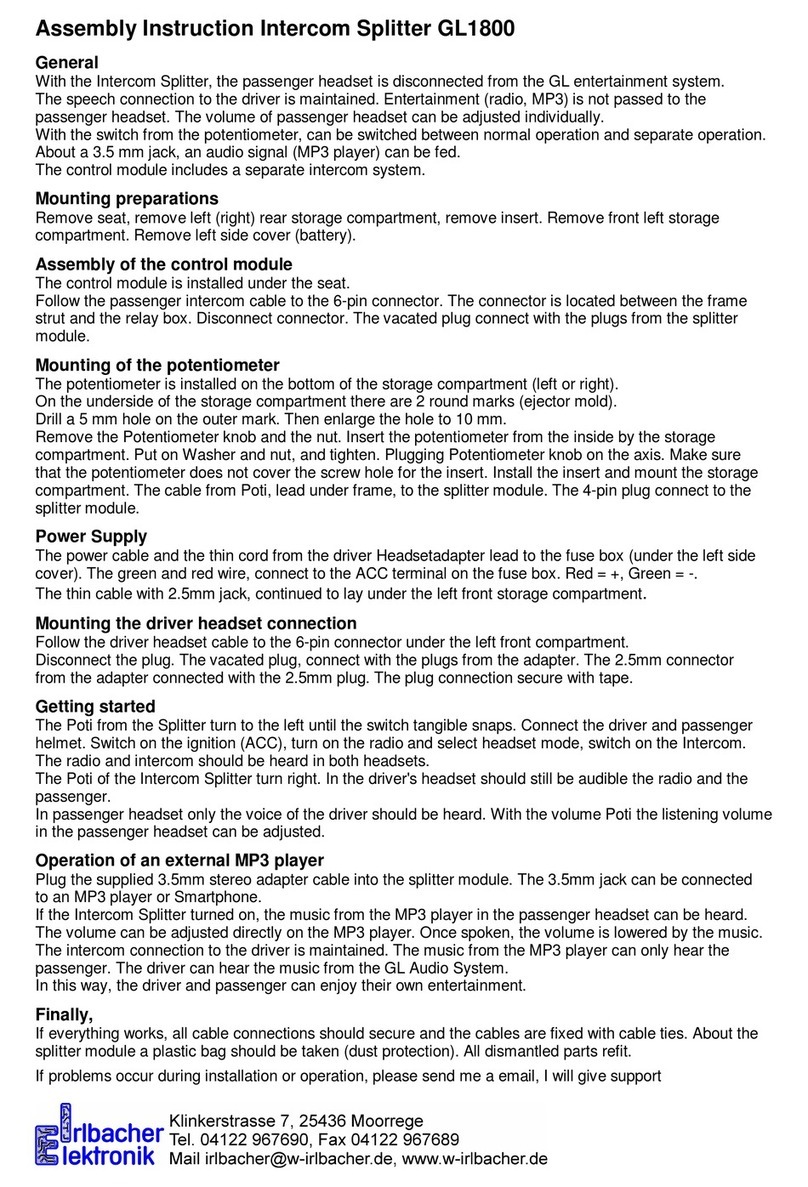
Irlbacher Eleltronik
Irlbacher Eleltronik Intercom Splitter Assembly instruction
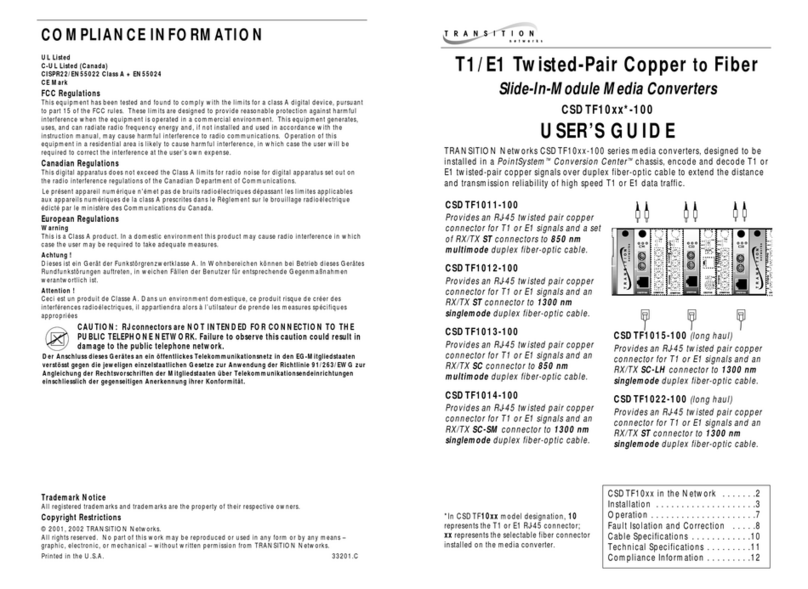
Transition Networks
Transition Networks CSDTF1011-100 user guide
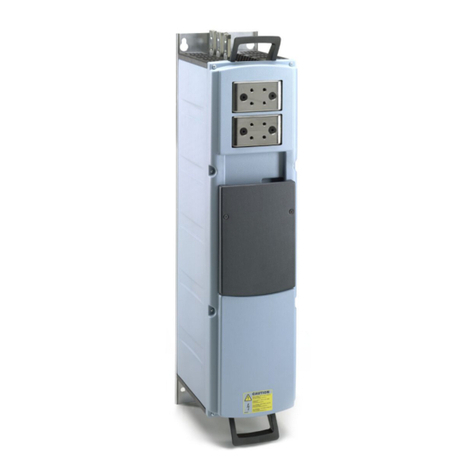
Vacon
Vacon NX Liquid Cooled user manual
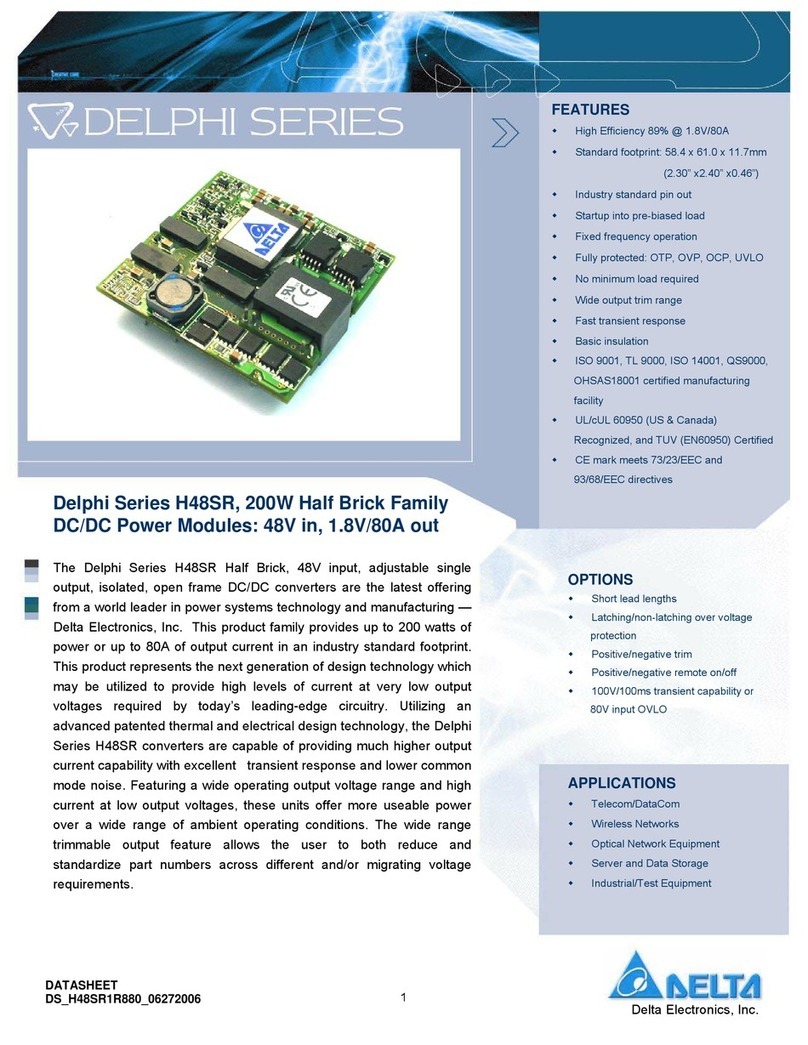
Delta Electronics
Delta Electronics Delphi H48SR datasheet

AFN
AFN AFN7500HD manual
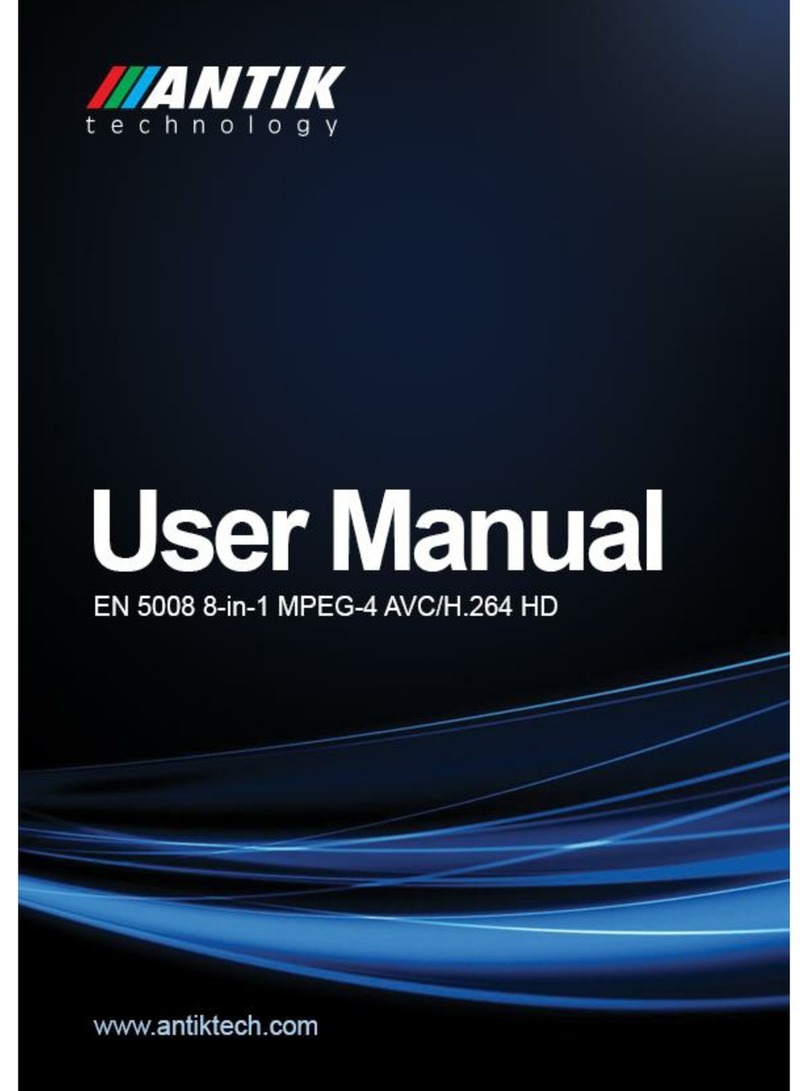
Antik
Antik Juice Encoder EN 5008 user manual
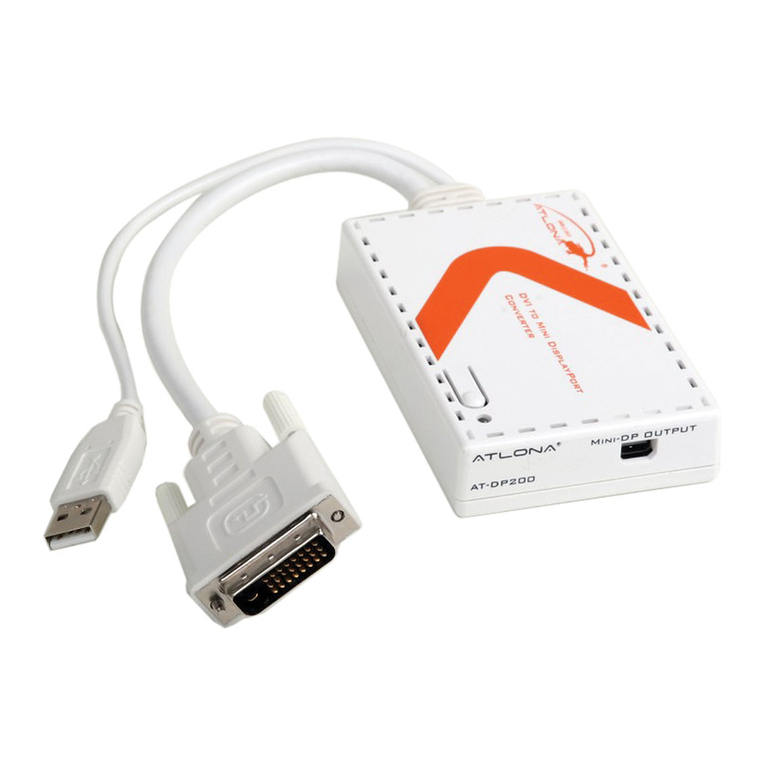
Atlona
Atlona AT-DP200 user manual
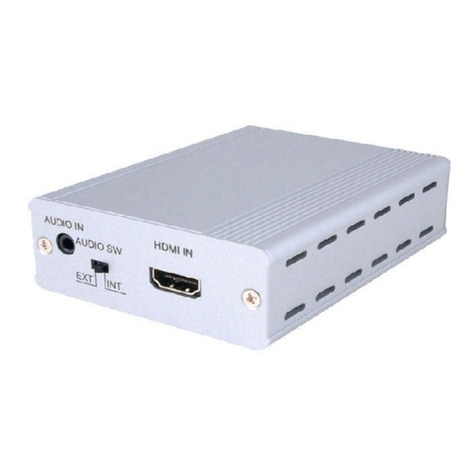
Converters.TV
Converters.TV 975 Operation manual
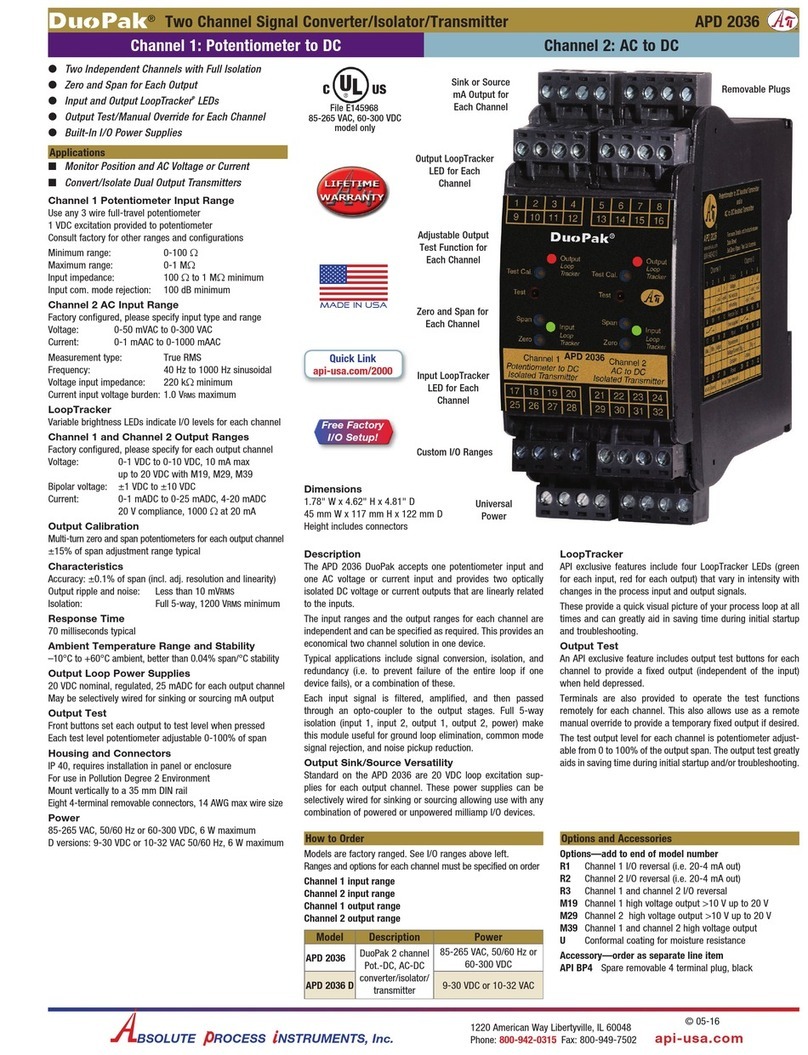
Absolute Process Instruments
Absolute Process Instruments DuoPak APD 2036 D manual
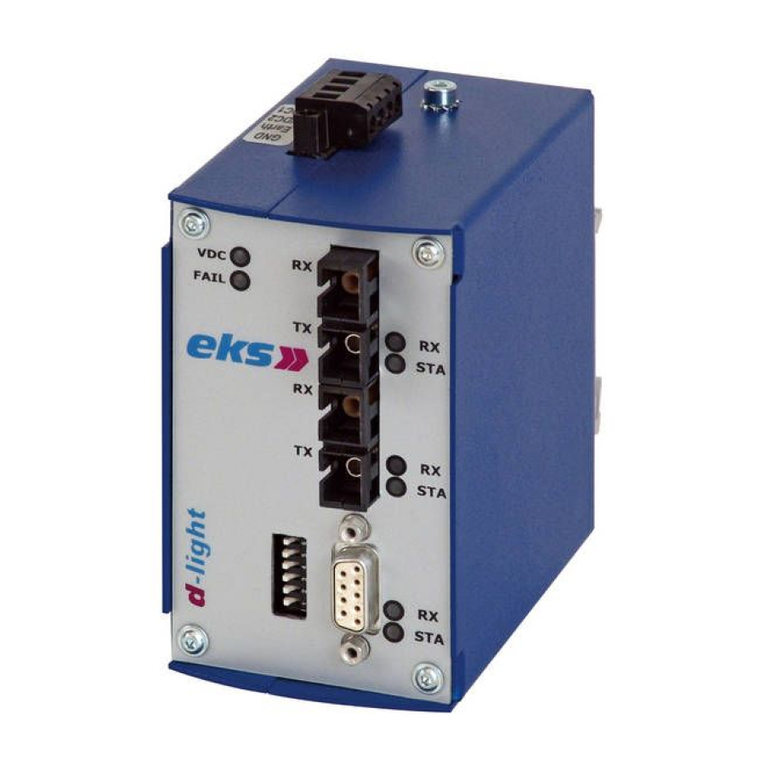
eks
eks Inroi d-light DL-LWV Description and manual
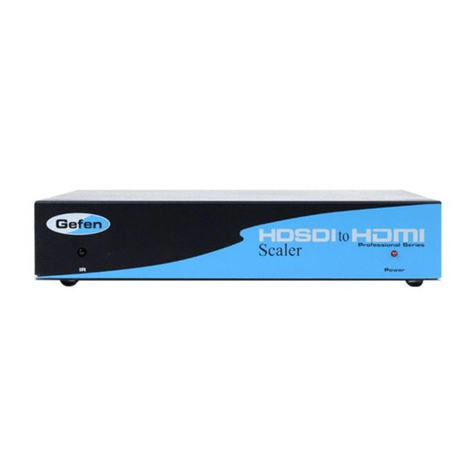
Gefen
Gefen EXT-HDSDI-2-DVISSL user manual

SIIG
SIIG RS-232 to Multi-Mode Fiber Optic Quick installation guide
